An Illustrated History of Old Sutton in St Helens, Lancashire
Part 28 (of 95 parts) - Pubs & Beerhouses in Sutton & Bold Part 1
Researched and Written by Stephen Wainwright ©MMXX Contact Me
Researched & Written by Stephen Wainwright ©MMXX
Old Sutton in St Helens
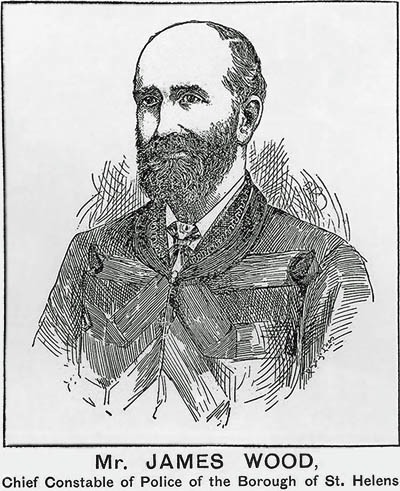
Arthur Wellesley, the Duke of Wellington, was responsible for putting the Beerhouse Act of 1830 on the statute list, keen to curb the rise of gin consumption and bypass local magistrates. Prior to the Act, drinking houses were either taverns or inns. In taverns you only ate and drank but inns also offered lodgings to travellers and could stay open as long as there was an empty bed. Beerhouses were mainly small, converted private dwellings and owners had simply to pay two guineas to the Excise in order to sell beer and cider to the general public from within their property.
In 1834 the opening hours for beerhouses within the Prescot division, which included Sutton, were 6am to 9pm from March to September. During the winter months, the hours were 7am to 9pm with the Sunday and Christmas / Easter opening times being 4pm to 8pm. Later legislation placed newly-opened beerhouses under the control of local authorities, who tightly regulated them along with the public houses. The latter were able to sell wine and spirits and were managed by publicans / licensed victuallers whilst beerhouses were run by keepers or beersellers. In 1869 it was stated that Sutton had 56 beerhouses and public houses, serving a relatively small population.
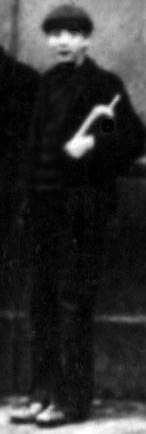
the Clock Face Inn
During the last 20 years of the 19th century, the numbers of beer and public houses in St Helens were roughly equal (about 140 each) with only 7 or 8 grocers holding wine and spirit licences. Chief Constable Wood proactively dealt with any infringements of the rules by all categories of licence-holders. Common offences committed were supplying drink to a drunken man, selling adulterated whisky and permitting drunkenness or gambling on the premises. Licence holders were even prosecuted for serving alcohol to police constables on duty!
Throughout the 1890s, there was a gradual reduction in the number of licensed places in St Helens. In an editorial dated February 8th 1898, the St Helens Newspaper claimed that magistrates on the licensing committee had for several years 'never hesitated to take any legitimate opportunity which has offered itself to reduce the facilities for drinking in the borough.' The annual licensing renewal days were seen as opportunities to quash the licenses of those who had broken the rules and new licenses weren't available 'either for love or money'.
On September 2nd 1890, builder Peter Tickle, who also had 15 years experience as a publican, applied for a new licence. He was going to build a new pub at a cost of £2,500 at the corner of Watery Lane and Normans Road. St.Helens Corporation had approved his building plans and he had a number of supporters, but his application was rejected. There was a desire to reduce the number of pubs and beerhouses in the town, not build new ones. The Licensing Acts of 1904 and 1910 introduced compensation for pub owners and licensees. This was payable when the licensing magistrates decided that their houses were unnecessary and it also served as an inducement for the surrendering of licenses. This was paid for by a levy on all licenses, which in St Helens came to £3000 per year. It was under this scheme that the Chester Lane Tavern, Black Horse Inn and Crown Inn in Peasley Cross, amongst others, closed their doors.
This page will attempt to document all public / beer and off-licensed houses that have been situated in Sutton and its outlying areas. Please contact me if you can supply further information and / or photographs. Thank you! Stephen Wainwright
A to Z of Sutton & Bold Pubs and Beerhouses
Alexander Vaults - 58 Crossley Road, West Sutton - Licensee in 1882 was Richard Seddon. Wine and spirits delivery man Peter Street was charged with stealing money from the Vaults in February of that year after sending a barmaid down to the cellar to look for empties. Street was cleared of the charge after his defence solicitor argued that the case for the prosecution simply rested on the evidence of two girls. - The landlord in 1891 was James Ashton -Alexandra Hotel - 14 Fisher Street (off Peckers Hill Road) - Thomas L. Williams surrendered the licence to Thomas Lunt in December 1871 and it was transferred from Lunt to Edward Westhead in July 1877, who was publican for over 30 years. - In April 1899 landlord Westhead was prosecuted for allowing gambling on his premises and was fined 20 shillings. - Closed 7th March 1932
Alma Vaults - 29 Peasley Cross Lane - Not to be confused with pubs in Duke Street, Liverpool Road and Eccleston - Former coal miner John Peel was listed in the 1881 census as beerhouse keeper and his son Edward Peel (who’d previously worked down a Sutton mine as drawer to his father) was publican in the 1891, 1901 and 1911 censuses. At a hearing of the St Helens Licensing Justices on May 20th 1920 it was stated that the Alma Vaults had been in the hands of the Peel family since 1876. - Closed 11th February 1922 under the compensation scheme. -
Beehive Inn - Watery Lane / Berrys Lane, Moss Nook - licence transferred in March 1891 from William Jones to David Chenney, a well-known hackney carriage proprietor. On October 29th 1891 he visited an old water-filled claypit nearby with his son John and a man named Robert Davies, in order to drive home some of his geese which had got loose. Chenney slipped and fell into the pit, which was about 20 feet deep. Despite an attempted rescue by a man named James Rigby, Chenney was drowned. - In October 1892 the licence was transferred from Jane Bryan to Michael Bryan. - On Boxing Day 1894, David Parry of Parr Stocks Road was fined ten shillings for stealing a duck from the Beehive Inn, the property of landlord Michael Bryan. - Then In May 1895 the licence was transferred from Michael Bryan back to Jane Bryan. - Richard Clare ran it in 1911 and David and Marian Evans in 1970.

The Beehive Inn which was situated at 268 Berry's Lane in Moss Nook, Sutton

The Beehive Inn was situated at 268 Berry's Lane in Moss Nook

The Beehive Inn in Moss Nook
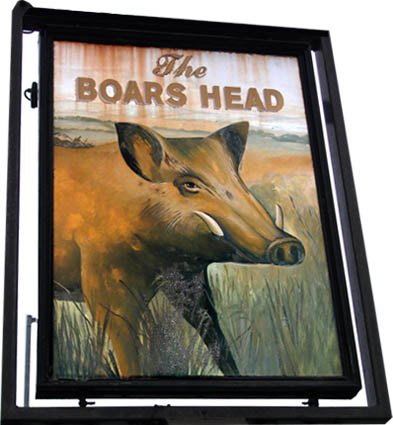
At this time the property was owned by Mr. J. E. Lewis Jnr., a great-nephew of Joseph Greenough, who received £55 per year by renting it to Forshaw’s Burtonwood Brewery. - In 1908 the Black Horse was closed as a result of a campaign to reduce the number of drinking houses in St.Helens. Licence renewal hearings on February 17th and April 9th were told that it was not needed, due to there being four public houses, three beerhouses and two grocery off-licenses within a quarter of a mile of the pub. Out of 42 police visits to the house, a total of 156 customers had been counted, making an average of 5¾ persons per visit. The licensing hearings were told that the block of property that the Black Horse served amounted to 207 houses, of which 57 were unoccupied as a consequence of recent mine closures. However over the last three years the pub had still averaged total sales equivalent to 348 barrels per year. The magistrates chaired by the Mayor Alderman Henry Martin refused to extend the licence and referred the Black Horse Inn to the compensation scheme.
Bold Arms - Liverpool Road, Bold Heath - Referred to in a Leeds Intelligencer article of January 9th 1787 which described how its honest keeper had discovered the sum of two guineas and a half in gold in one of his beds. This had been accidentally left by a traveller. Although the guest had departed, the landlord managed to return the money to him. - Robert Rogers was licensee in 1871 and in May 1873 it was transferred to Peter Goulding, who was still in charge in 1881. - The Bold Arms Hotel was also mentioned in a Liverpool Mercury article of July 17th 1883 about the Liverpool Amateur Bicycle Club's annual championship race which took place between the Red Lion Hotel, Rainhill and the Bold Arms. - The licensee in 1891 was Irishman William Byron, whose occupation in the census was stated as publican and market gardener. In the 1901 census his wife Ellen was running the pub but still a nursery gardener. - On February 4th 1908 permission was granted to erect a new Clock Face Hotel in place of the existing inn on condition that Messrs. Greenall gave up the Bold Arms and the Bottle and Glass in Eccleston which the company agreed to. -
Boars Head - 675 Elton Head Road, Sutton Heath (formerly Mill Lane / Prescot Lane) - Research by Paul Allen has revealed that the Boars Head originally had a holding cell for use by the local constables. Their prisoners were held in the cell pending transport to the Raven Inn in St Helens, where there was a larger holding cell that prisoners occupied prior to being placed before the local magistrates. Paul believes that the Boars Head is one of the oldest buildings in St Helens and could be as old as 1640-60. It was certainly in existence during the 1700s, according to the Michael Hughes letters and colliery records. - Joseph Large was licensee in 1800 - During the 1840s & '50s, the Sutton Heath Dancing Club held their annual ball at the Boars Head - Wheelwright Peter Webster was licensee in 1850 - Listed in Worrall's Directory of 1871 and the census of that year listed Ellen Penketh as publican, blacksmith and wheelwright employing four men. - The licence was transferred in July 1873 from Henry Rainford to John Woodward and then in April 1875 to William Henry Sharples, who was fined £2 in August 1882 for selling adulterated spirits. - William Sharples was still licensee in 1891 - John Knight was publican in the 1901 census and John Robinson was licensee in the 1911 census. - In June 1918 the licence was transferred from Annie Robinson to William Byrom. Mary Byron was licensee in 1939.
John and Greta Chisnall ran the Greenall Whitley pub from 1986 after a 12-week refurbishment. In an article in the St.Helens Star, the Boars Head was reported to have been transformed into a house with old world charm, a ‘black and white, stone walled, oak–beamed country type pub with ample car parking.’ The lounge had been decorated with a red and black carpet, red fixed seating and stools and mahogany tables, with brass lamps, brassware and Lancashire prints. Even the juke box played hits from the 1950s and ‘60s and the bar area was re-decorated in green and white with new seating and curtains. John and Greta organised an open week, which began on September 15th 1986, so that customers could get to know their new landlord and landlady and the new-look pub. The left side of the lounge served as the restaurant area and amongst the home-made food was chutney, made using apples from the Boar’s Head’s own apple trees. Closed in 2015 with plans submitted to St Helens Council by Punch Taverns in April to demolish the Boars Head and replace it with a convenience store, small shop and parking area. The St.Helens Campaign for Real Ale (CAMRA) objected to the proposals saying that the demolition will "leave a large chunk of the town with no pub to forge a community around". Planning permission was granted in December 2015. However the convenience store operator dropped out and at the beginning of January 2016 it was announced that the building had been purchased by Bravo Inns for continued pub use. Renovation took place and the Boars Head was reopened on April 14th 2016.
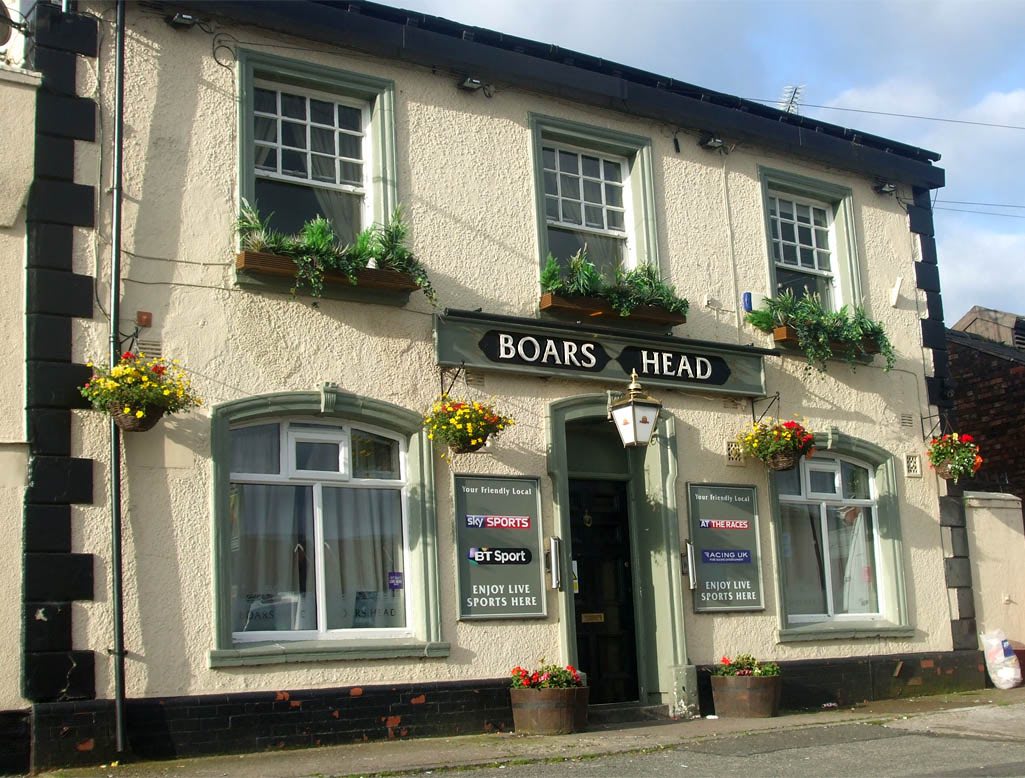
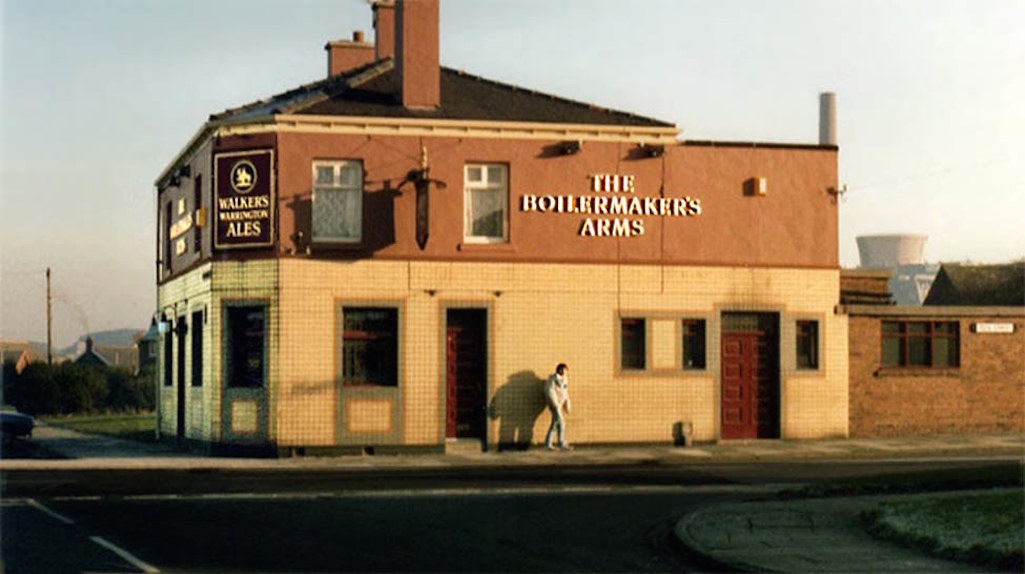
The Boilermakers in the 1960s - note Bold power station tower on the right - contributed by Dave Latham

Boilermakers in the 1960s - note Bold power station tower on the right

The Boilermakers in the 1960s
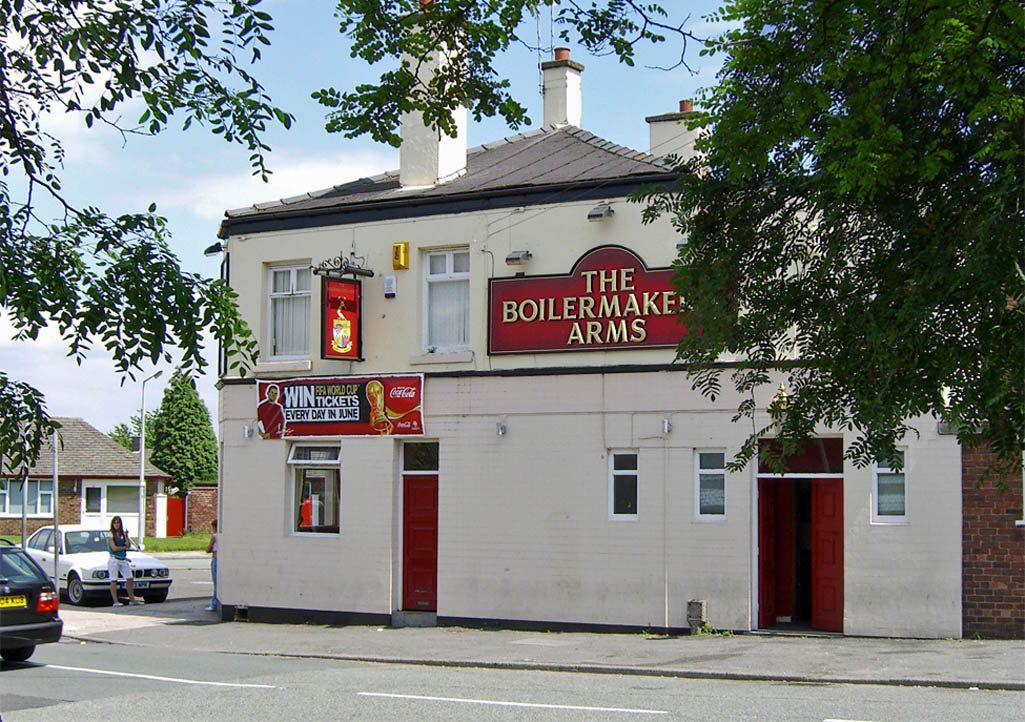
The Boilermaker Arms known as Arkies in Hoghton Road photographed in June 2006

The Boilermaker Arms known as Arkies pictured in June 2006

Boilermaker Arms in June 2006
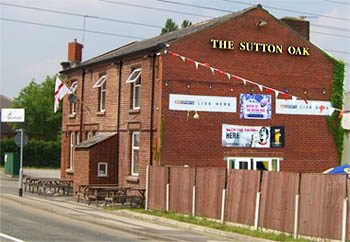
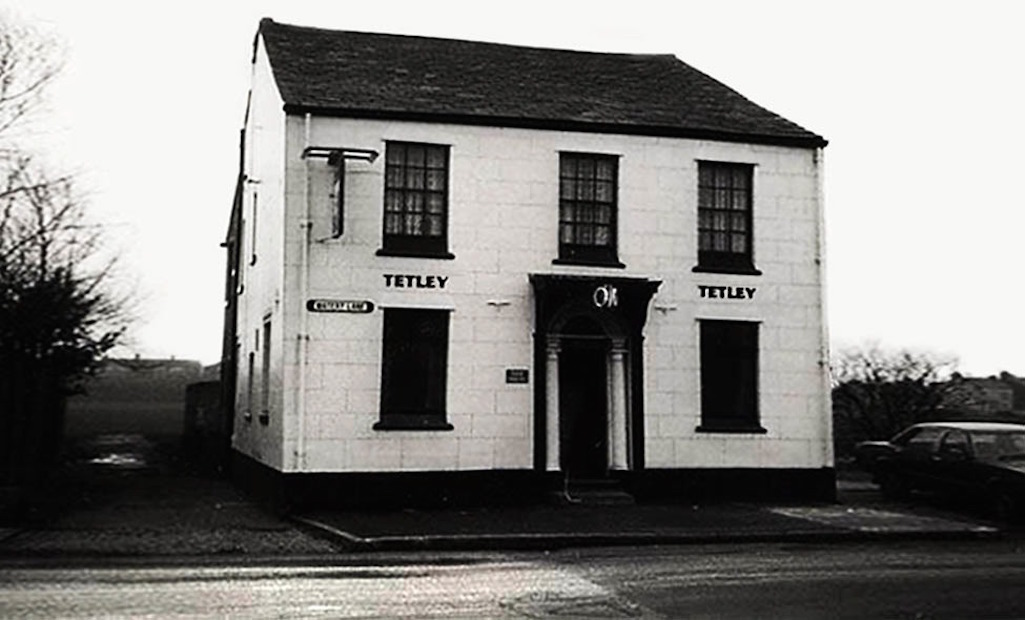
The Bowling Green Inn at 220 Watery Lane in Moss Nook - not to be confused with the Robins Lane inn

The Bowling Green Inn at 220 Watery Lane in Moss Nook

The Bowling Green Inn in Moss Nook
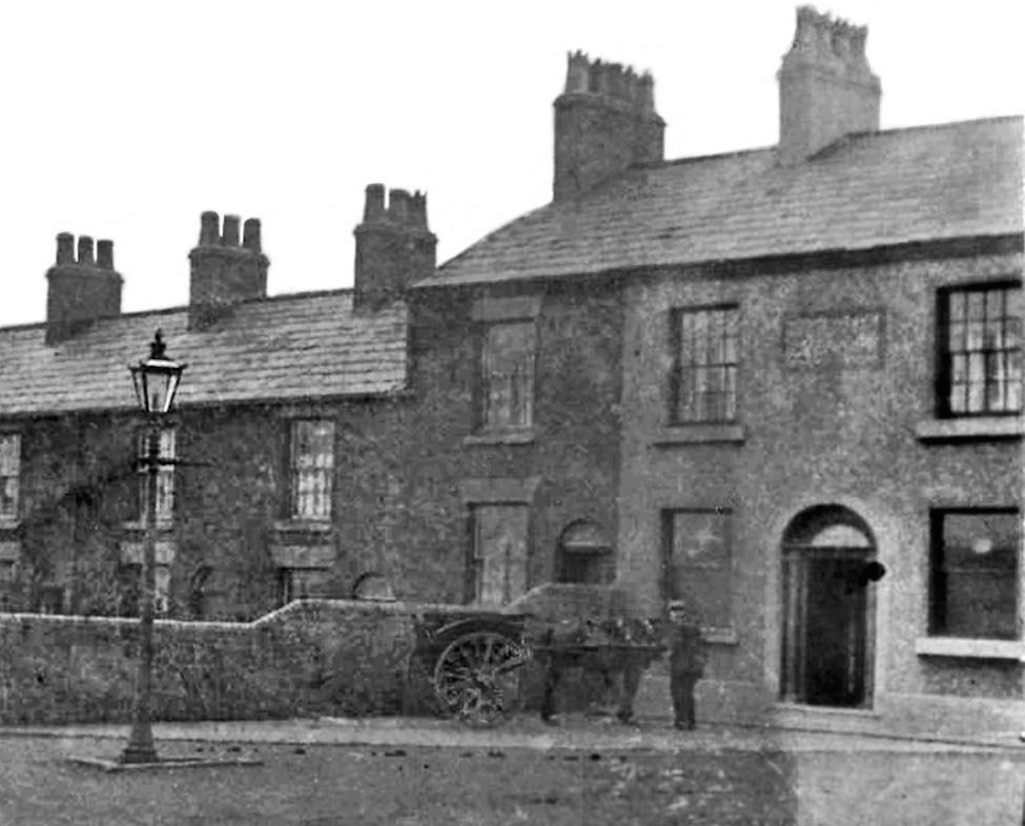
The original Bowling Green Inn in Robins Lane - contributed by Brenda Macdonald

The original Bowling Green Inn in Robins Lane, Sutton, St.Helens

Bowling Green Inn in Robins Lane
Bridge Inn / Tavern - 37 Sutton Road, Peasley Cross near Gaskell Street and the railway bridge. It was said to have been single storey and painted blue and white and was known for having chained monkeys in its back yard. The Bridge was nicknamed 'The Station', apparently due to its close proximity to Peasley Cross Station. - William Newton was licensee in 1861 - Collier Abraham Anders was licensee in 1881 - In August 1882 the licence was transferred from Thomas Rigby to George Milne - In July 1884 the Bedford Brewing and Malting Company of Leigh advertised the Bridge Inn beerhouse in the Liverpool Echo offering "low rent; immediate possession". - In October 1884 licence transferred from Joseph Parr to Thomas Halton - in May 1900 licence transferred from Henry Bickerstaffe to Alfred Smith who was still licensee in 1911 - John 'Jack' Ashton was both publican and undertaker - In March 1914 Frederick John Frost of 4 Orrell Street was fined 20 shillings for stealing from the Bridge Inn's till. He was the boyfriend of Ashton's step-daughter and was spotting stealing by Mrs. Ashton. She had concealed herself in the cellar in order to watch the till after money had gone missing. When John Ashton called for the police, Frost bolted over a back wall. - Elizabeth Ashton took over the licence on September 10th 1917 after her husband had joined the army. - In January 1926 John Ashton was made bankrupt. It was revealed at his examination that he was owed £624 for his services as an undertaker from poor people unable to pay for funerals. - Closed 10th August 1929 and became the site of Peasley Cross Labour Club -
Broad Oak - The sole reference to this pub is in a Liverpool Mercury report of April 15th, 1873: ‘The license of the Broad Oak, Sutton, was temporarily transferred from William Pilling to William Roberts.’ -
Brynn-y-Fillin Inn - Brynn-y-Fillin Road, Moss Nook - Michael Burke held the licence in 1871 - James Yates Jnr. is recorded as taking over the licence from Ann Ingleby in 1892 - In October 1892 the licence was transferred from Yates to Peter Lees.
Bull & Dog Inn - 2 Clock Face Road - John Greenhaugh was the licensee in 1800. - Originally a beerhouse with Edward Seddon listed in the 1851 census as beerseller and cabinet maker William Woods as licensee in 1871. - Listed as the Bull & Bitch Inn in the 1881 census with James Lyon as landlord. Thomas Brown was licensee by February 1889, when he was advertising for a “strong lad, about 14 years old”. Brown also owned a barn / shippon (cattle shed) in Mill Lane and on October 15th 1890 it caught fire. The steam fire engine of the St.Helens Fire Brigade extinguished the blaze after an hour, sourcing water from Sutton Mill Dam. - The Bull and Dog was one of the first pubs in Sutton to have a bowling green. In November 1866 the green, then tenanted by William Woods and measuring 1 rood 10 perches, was put up for sale with the suggestion that there were ‘valuable beds of fire and pot clay’ underneath. - The licence was transferred in April 1893 to Mary Brown who was still there in 1901 - Tom Jones held it in 1913/14 - Mary Bradshaw described herself as ‘Hotel Proprietress’ in the 1939 Register. Her husband James was a train driver. - Joe Ledger became licensee in February 1970. - In July 2016 plans were submitted to St Helens Council to create an exterior children's play area and timber pergola.
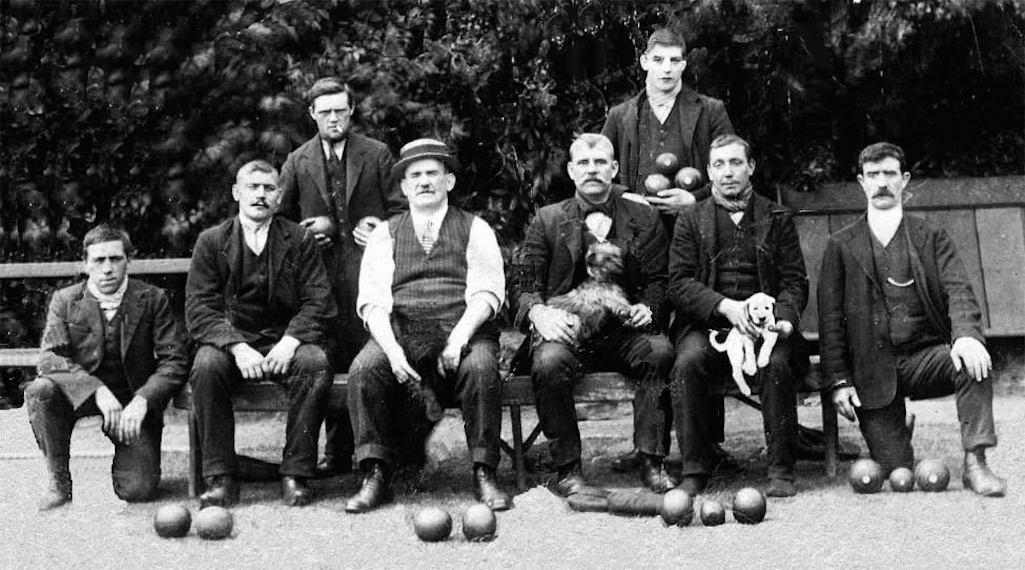
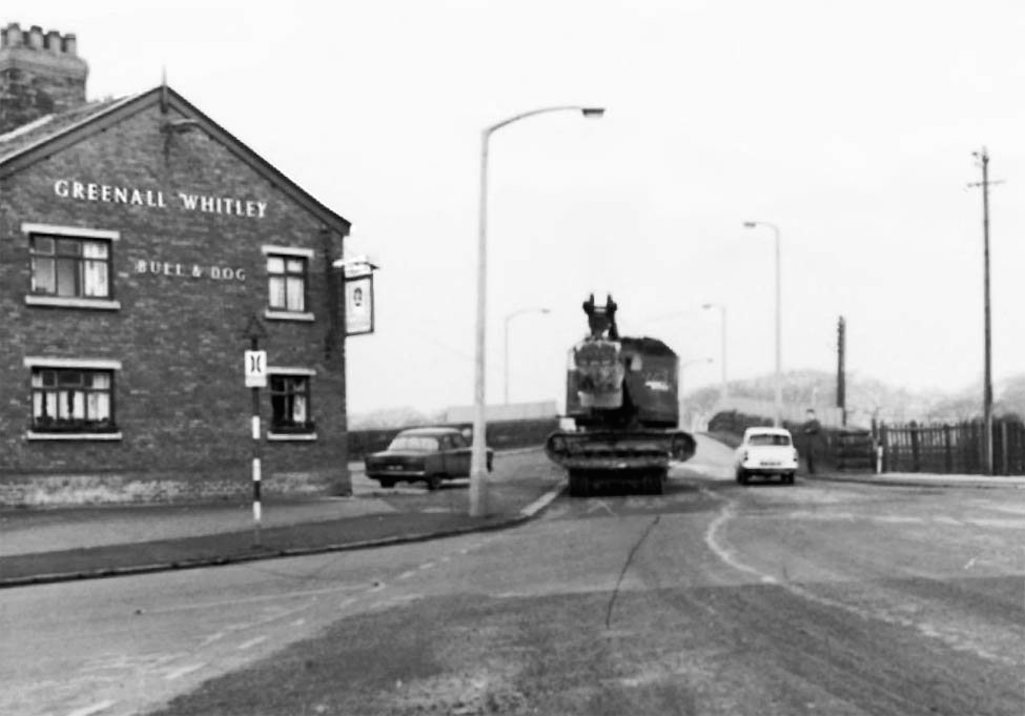
The Bull & Dog in 1963 by the old Marshalls Cross bridge with reverse view below - contributed by Jim Lamb

Bull & Dog in 1963 by the old bridge with reverse view below

The Bull & Dog in 1963
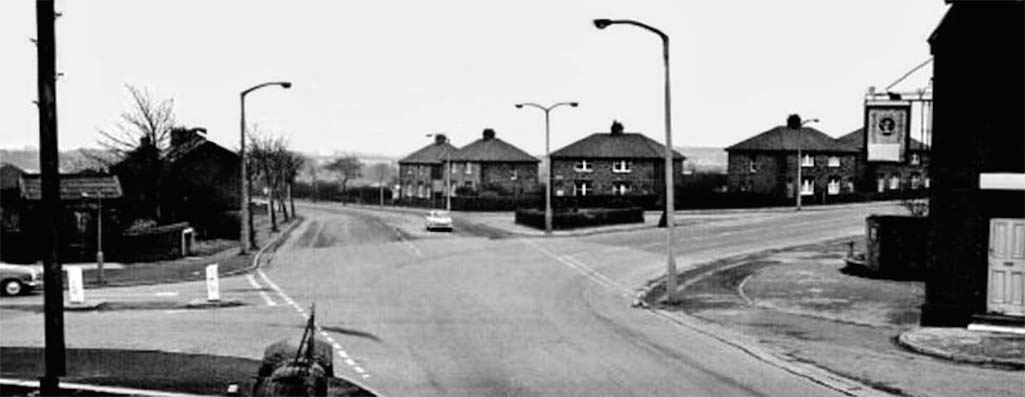
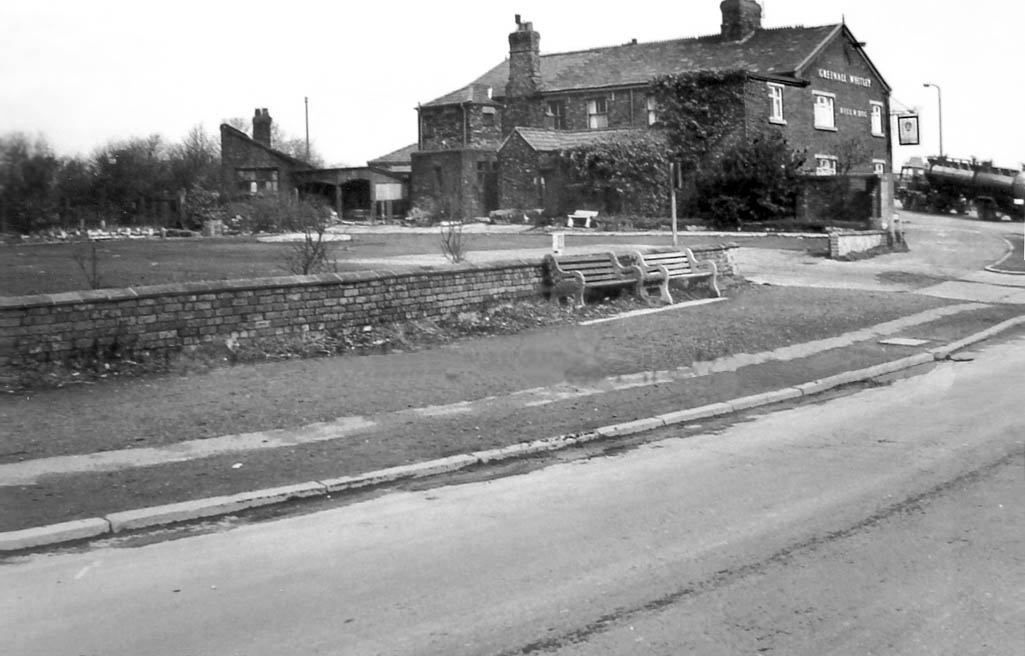
Jim Lamb took this photo of the Bull & Dog from the top of Chester Lane on March 31st 1970

Jim Lamb took this photo of the Bull & Dog on March 31st 1970

Bull & Dog on March 31st 1970
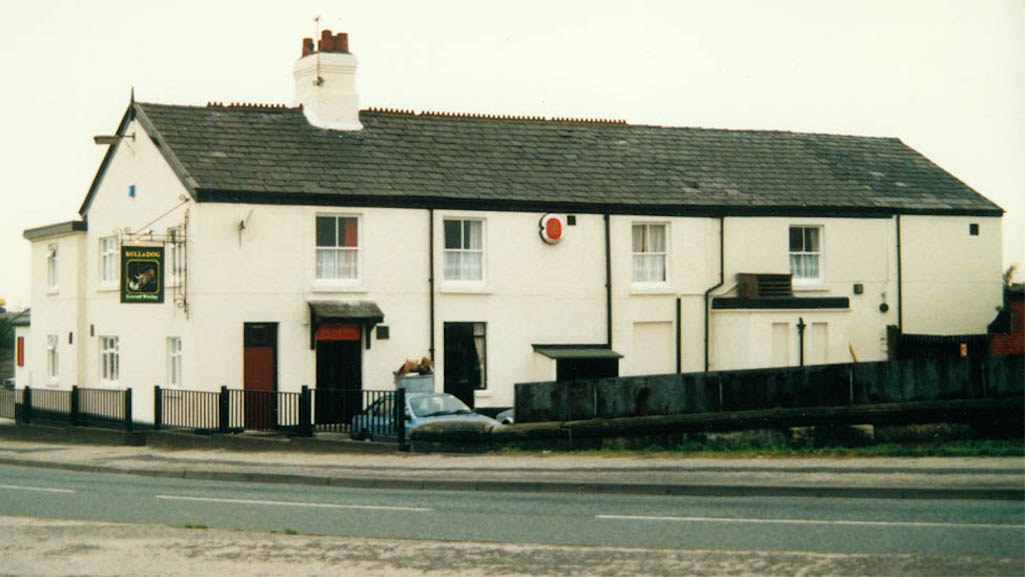
By the time this picture was taken in the 1980s, the Bull & Dog had had a makeover - contributed by Jim Lamb

By the time this was taken in the 1980s, the Bull & Dog had had a makeover

This picture was taken in the 1980s
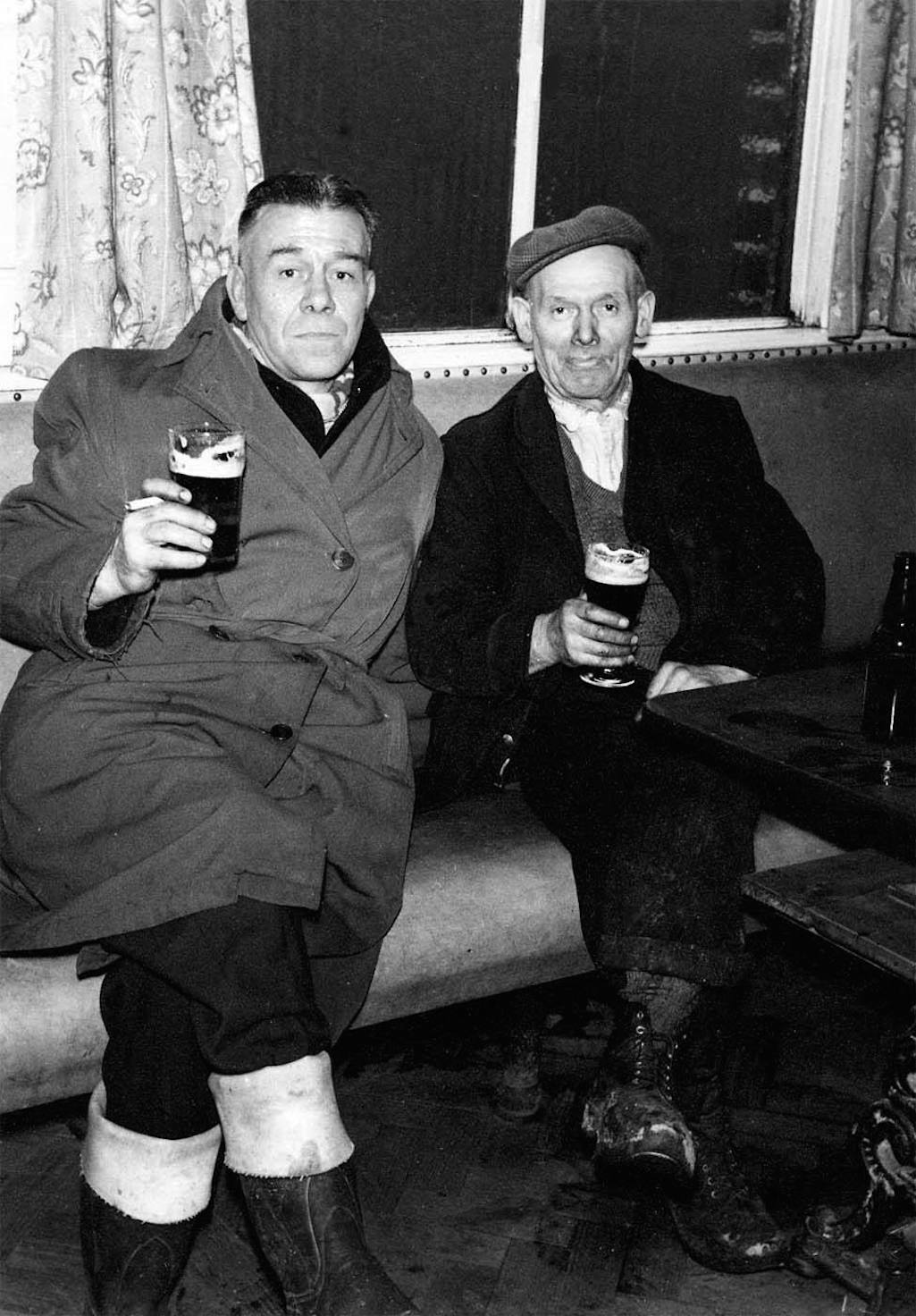
Tom Austin (293 Mill Lane) & James 'Bud' Lamb (7 Chester Lane) enjoy a pint in the Bull & Dog in 1952 after a day’s work at Roughdales

Tom Austin and James 'Bud' Lamb enjoy a pint in the Bull & Dog in 1952

Tom Austin and James 'Bud' Lamb enjoy a pint in the Bull & Dog in 1952
Chester Lane Tavern - 14 Chester Lane - Samuel Harrison was licensee from 1874 and he and his wife Jane kept it until 1900. In 1884 Samuel was placed on the licensing 'blacklist' for breaches of his licence. - On January 17th 1894, the Liverpool Mercury reported that Thomas Howard of 147 Appleton Street had appeared at St.Helens Police Court the previous day, charged with stealing five meat pies valued at 10d. The lad had entered the Chester Lane Tavern, found it to be seemingly empty and then "took off his clogs, crept behind the counter, and helped himself to a plate of meat pies". He was given six strokes with the birch - On February 6th 1900, 65-years-old licensee Jane Harrison died under unusual circumstances. On December 27th 1899, two boys were fighting in Chester Lane. The mother of one boy ran towards the pair and accidentally collided with Mrs. Harrison who was knocked down and fractured her thigh. Pneumonia then set in and she expired despite the efforts of Dr. Casey. In May the beerhouse's licence was transferred to daughter Mary Jane Harrison and then in November 1900 to J. T. Greenall. - Mr. Rennie kept it in 1911 but upon his death his widow Catherine took over the licence.
In April 1915 the licence was transferred to George Ashcroft who was permitted to continue working at Roughdales Pottery until the end of the war. - On May 21st 1918 a licensing hearing took place to decide whether St Helens Police’s application to close the Chester Lane Tavern should be allowed. Inspector Anders told the hearing that the house was not required and was structurally deficient. Solicitor Lindon Riley stated that brewers Greenall Whitley thought otherwise, having extended their lease with the owner for a further 14 years as recently as 1916. The owner had spent £270 in providing sanitary accommodation for the Tavern, as well as neighbouring houses. Four and a half barrels of beer a week were still been sold despite wartime restrictions on opening hours. However the magistrates decided to close the beerhouse under the compensation scheme. – Closed 16th July 1919. – Shirley Jones wrote to this website in April 2020: "My nan lived in part of the pub when the house was modernised 27 years ago and they found a well in the kitchen which must have been used for brewing beer."
Church Inn - The Liverpool Mercury of August 15th 1871 mentions in a report of St.Helens licence transfers that the Church Inn, Sutton had passed from Thomas Woodward to Ann Woodward -
Clock Face Inn (1st) - Clock Face Road near the railway station - Thomas Grace was the licensee on records dated 1800 but it is believed to date back much further, probably as a coaching inn on the main thoroughfare from Warrington. Grace was the landlord for almost 30 years. - On an 1842 Tithe map the Clock Face is registered as a public house and smithy. - William Bromilow was the landlord from the 1860s to the 1880s - Bold Estate owner William Whitacre Tipping, locally known as 'Squire' Tipping, owned the inn around this time. - On March 14th 1887, Warrington footballer John Beddard was fined £2 for stealing three candlesticks from the Clock Face Inn. The licensee then was William’s widow Mary Bromilow, who was still listed as publican in the 1891 census aged 70. - In February 1894 the licence was transferred from Elizabeth Colquitt to Richard Colquitt - Harry Hibbert was licensee when the photograph below was taken - The licensee in 1901 was Elizabeth Vardy. - In February 1903 the inn with gardens, land and outbuildings were put up for sale. Advertisements described the "Total area, including the site of the buildings and one-half in width of the intended new street, 3,595 square yards or thereabouts". On February 18th 1903 at the Lion Hotel in Warrington the Clock Face was sold by auction to existing lessee Greenall Whitley for £4,000. - This report appeared in the Warrington Guardian of October 17th 1903:
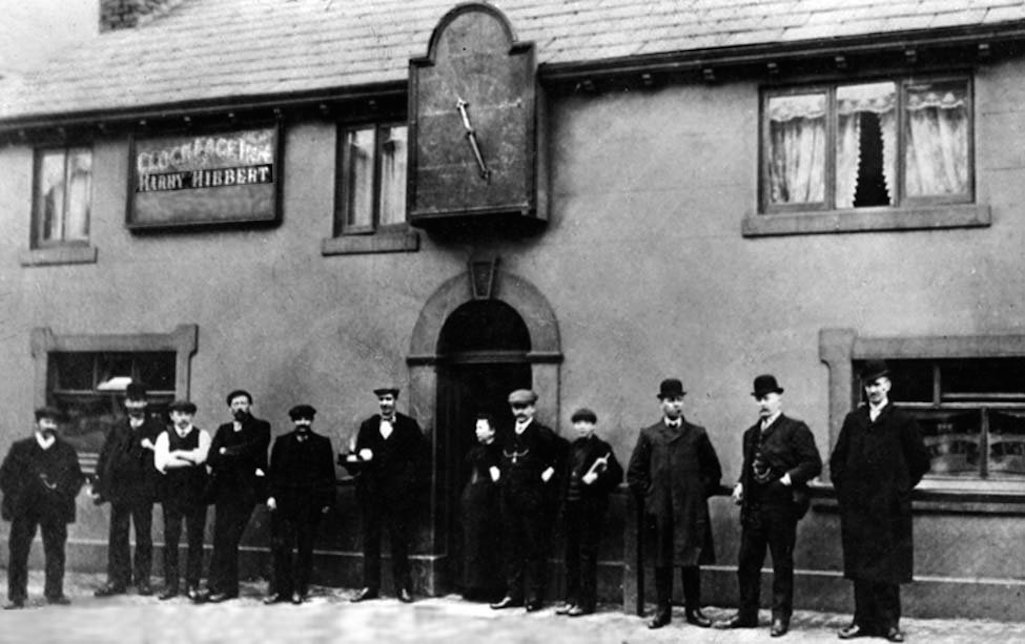
The original Clock Face Inn in Clock Face Road which was then run by Harry Hibbert

The original Clock Face Inn which was then run by Harry Hibbert

The original Clock Face Inn
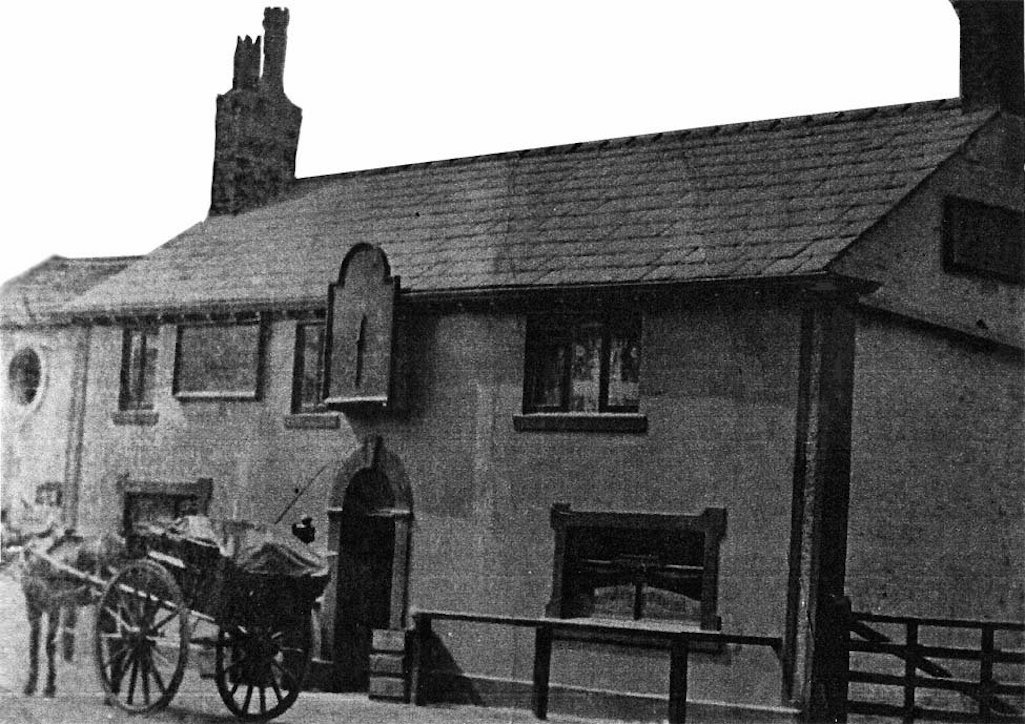
Another view of the original Clock Face Inn - a smithy is probably on the left - contributed by Susan Davies

Another view of the original Clock Face Inn - a smithy is probably on the left

Another view of the original Inn
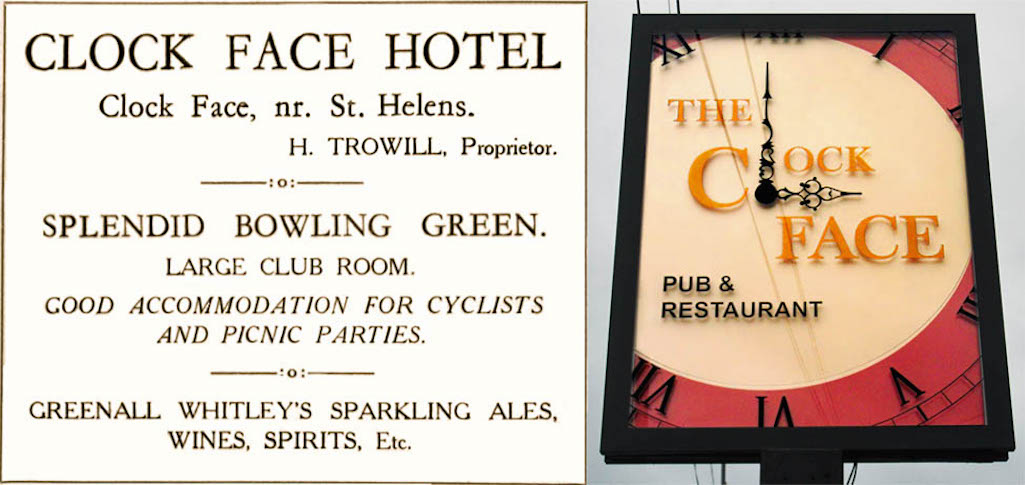
Advert in the 1931 programme for the foundation stone laying of St. Theresa's RC Church plus modern-day pub sign

Clock Face Hotel advert in a 1931 programme plus modern-day pub sign

Clock Face Hotel advert in a 1931 programme plus modern-day pub sign
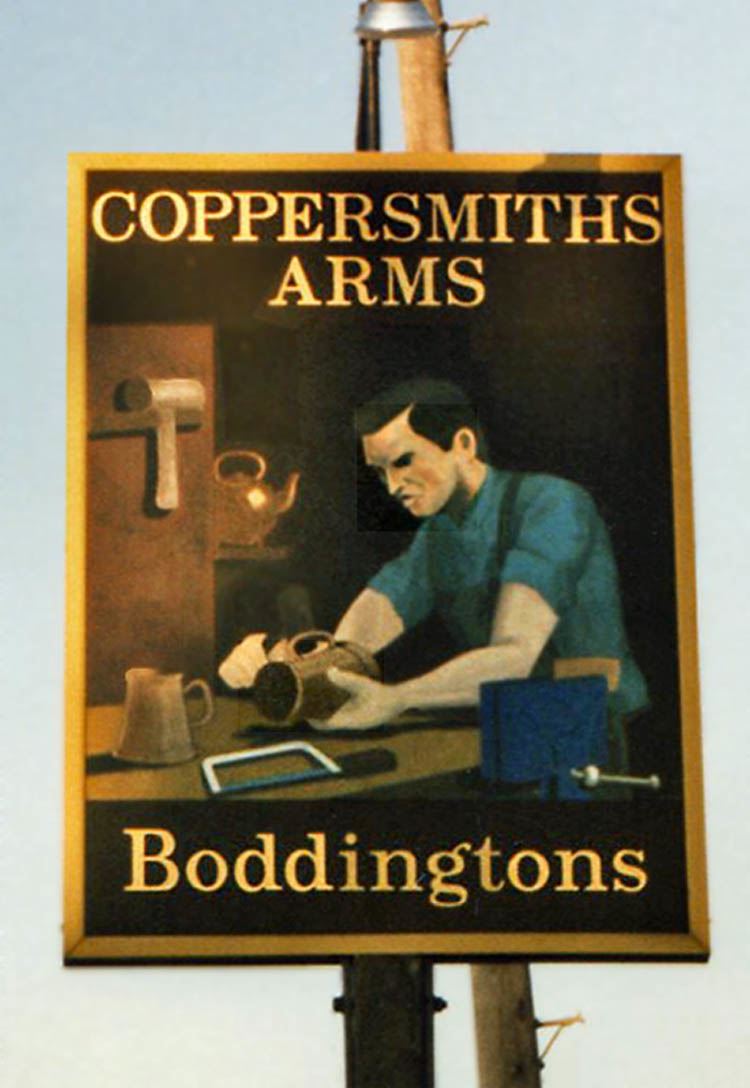
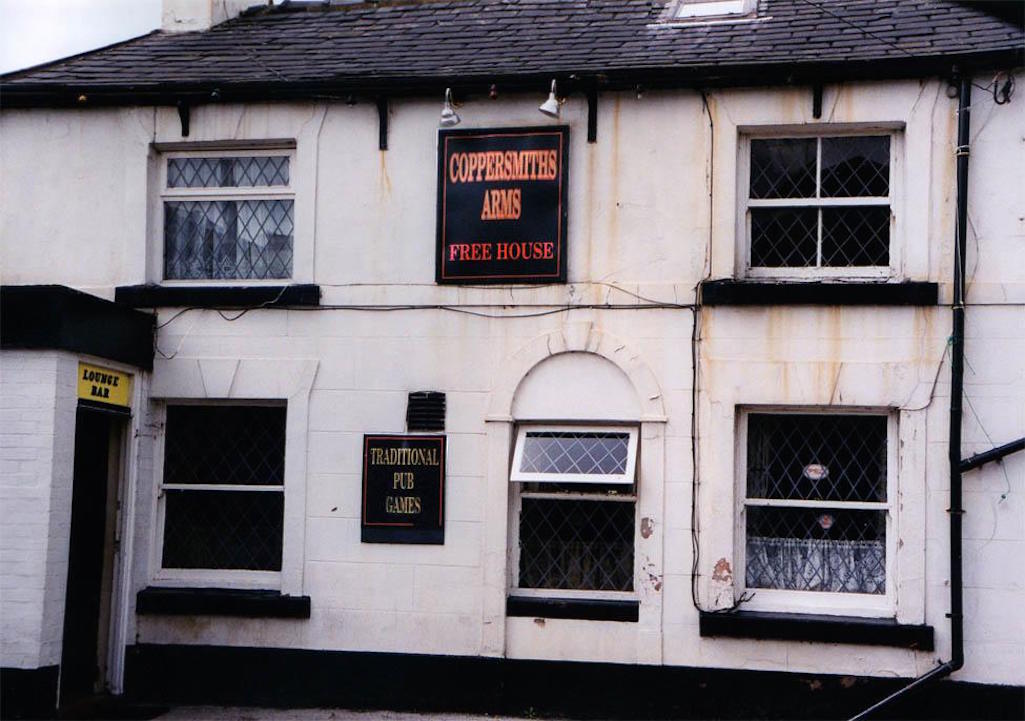
Two photos of the Coppersmiths from the mid-1970s - contributed by Dave Latham

Two photographs of the Coppersmiths Arms from the mid-1970s

Two photographs of the Coppersmiths Arms from the mid-1970s
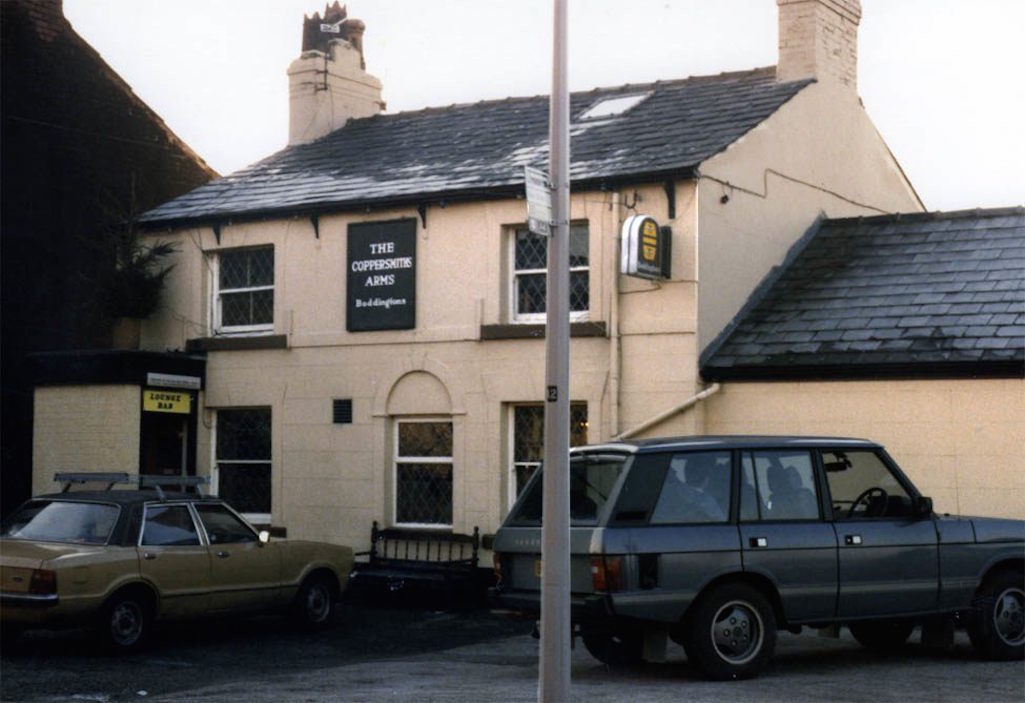
How the Coppersmiths in Watery Lane looked about 1984/5 - contributed by Dave Latham

How the Coppersmiths Arms in Watery Lane looked about 1984/5

The Coppersmiths Arms c.1984/5
Crown Inn - Beerhouse at 99 Peasley Cross Lane, in between Manor Street and Greenough Street - In November 1899 the licence was transferred from Thomas Atherton to Thomas Bridge - John Foster in 1911 - On December 11th 1916 the licence was briefly transferred to Ann Foster until the Crown's closure under the compensation scheme. - Closed 13th January 1917
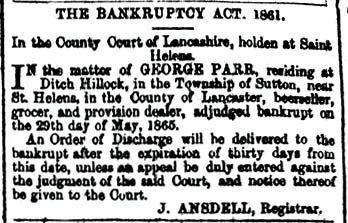
Dog and Gun - Ell Bess Lane - beerhouse listed in the 1871 census with James Marsh as beerhouse keeper. His son Peter was landlord in 1881 - the censuses suggest that it was located next to the Ell Bess Arms (see photo in Ell Bess entry) -
Elephant Inn - Elephant Lane - Edward Bromilow, licensee in 1800 - 61-year-old Nathan Prescot licensed victualler in 1861 census -
Ell Bess Arms / Vaults / Hell Bess Inn - Originally in Hell Bess Lane. There were two street name changes; from the 1870s it became 206 Ell Bess Lane and then 206 Sherdley Road from 1902 - According to the St.Helens Newspaper of 1/4/1938, it used to be kept by a Betty or Bess Seddon "whose vigour in keeping unruly customers in order was such that she was given the name of Hell Bess”. As a result the beerhouse had the nickname ‘Owd Bet Seddon’s’. - The Brownbill family ran it during the second half of the nineteenth century. In 1851 James Brownbill was the licensee, Elizabeth Brownbill in the 1861 census and their son James in 1871. Elizabeth Brownbill took over the licence again in December 1876 from her son and James's widow Rosanna Brownbill was licensee in the 1881 census. - In February 1894 the licence was transferred from Rosanna to Henry Johnson, who ran it until 1909 - Mary Cosgrove was licensee in 1911 and she was fined in 1916 for a licensing offence. - Closed March 8th 1938, although it wasn’t demolished until 1961. - In an article in the St.Helens Reporter of April 28th 1962 the daughter of licensee Henry Johnson related her memories of living at the beerhouse from 1894 to 1909. Lily Smith (b. 1889) said that in those days beer was 1½d. a gill, and 2½d. a pint with the Ell Bess, like other local pubs, open from 6am to 11pm at night. She also commented on the Kurtz chemical works explosion on May 12th 1899: “All the people fled from the works and a large number arrived at our pub. My father said that he sold every drop of everything he had in the pub, and my mother told me that all the food went as well”. Lily also described how many customers took part in pigeon sweeps, with some of the birds despatched as far away as France, which created much excitement. There was a large garden at each side of the Ell Bess and a skittle alley along its front, which attracted many customers. - The Ell Bess garage took over the site, which was purchased c.1962/3 by Arthur Roby and Cliff Withenshaw. The latter had previously owned the 'Sutton Bug' cinema. The foundations of the Ell Bess pub were still visible for some years. - Also see this article here in the Sutton Streets & Placenames page -
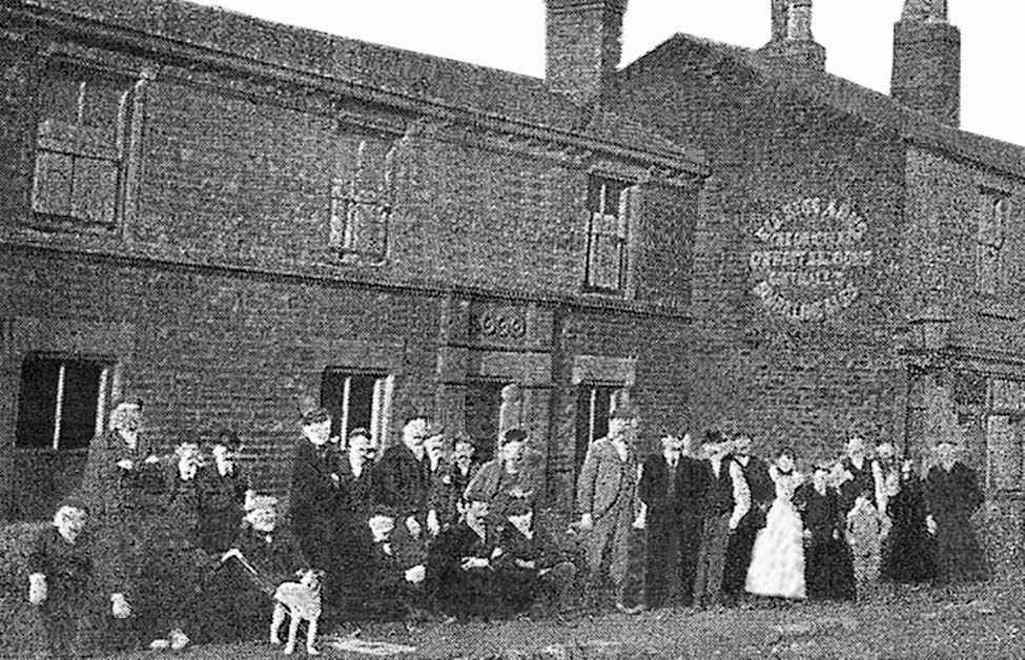
Ell Bess Arms c.1900, probably on the right with the old Dog and Gun on the left - contributed by Allan Isaacs

Ell Bess Arms probably on the right with the old Dog and Gun on the left

Ell Bess Arms probably on the right with the old Dog and Gun on the left
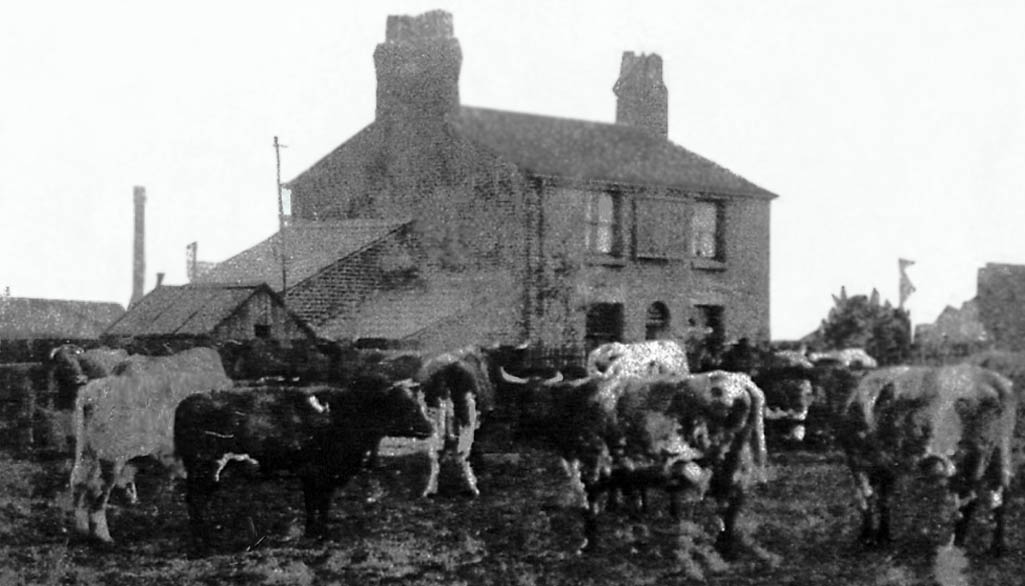
The Engine and Tender which was also a farm house - contributed by Dawn Harvey (nee Garton)

The Engine and Tender off Reginald Road was also a farm house

The Engine and Tender in Sutton
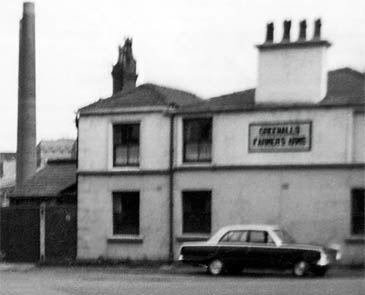
Farmers Arms - 1 Bold Road at its junction with Normans Lane - From the late 1870s it was managed by the Tinsley family. John Tinsley died in 1877 and his wife Ann became publican/beer seller until she died in 1895. By 1901 their son John had taken over as licensee who was still there in 1911 (thanks to Chris Carson for the details) - Owners Greenall Whitley were given permission to make alterations to the pub in November 1894 - The Rose Vale Sick & Burial Society was registered at the Farmers Arms until it was dissolved in 1915, as well as the Sutton Moss Friendly Burial Society until it was dissolved in May 1943. - Landlord John Tinsley was fined £2 on November 23rd 1917 for permitting drunkenness on his premises. - Josiah Greenall held the licence in 1939 - During the 1940s / early '50s 'Nellie' Brown was licensee and from 1970 to 1972 the Farmers Arms was run by Oz Atherton and his wife Christina.
George and Dragon - Peasley Cross Lane - William Duxburry licensee in 1891 -
Glasshouse Tavern - 70? Watery Lane - In July 1878 the Glasshouse was offered for sale by auction - In August 1878 the licence was transferred from Thomas Brown to Job Heath -
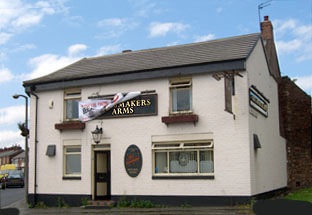
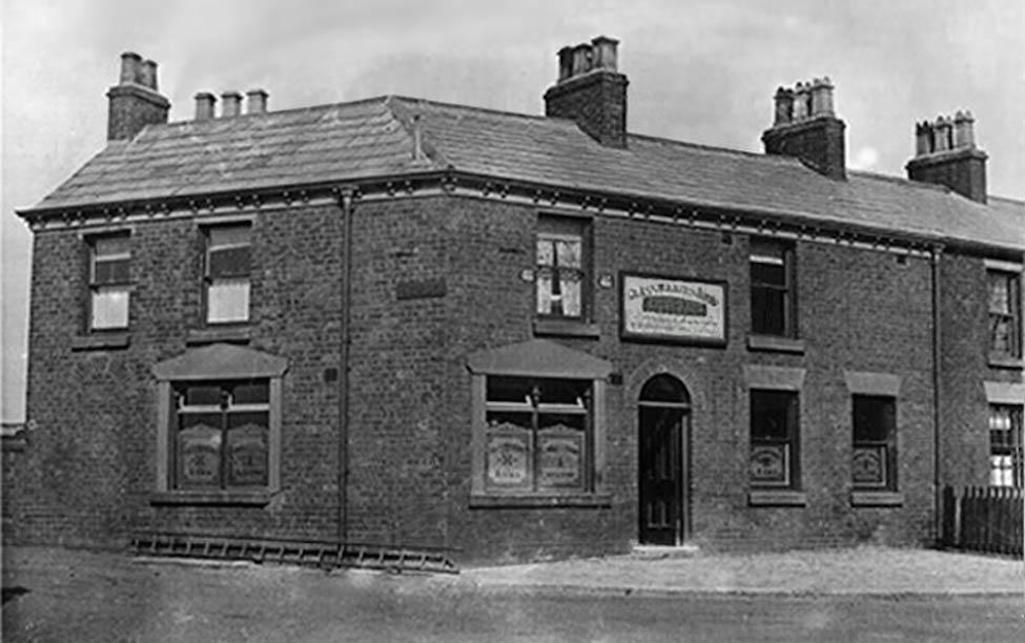
The Glassmakers Arms in Waterdale Crescent pictured around 1900

The Glassmakers Arms in Waterdale Crescent pictured around 1900

The Glassmakers Arms around 1900
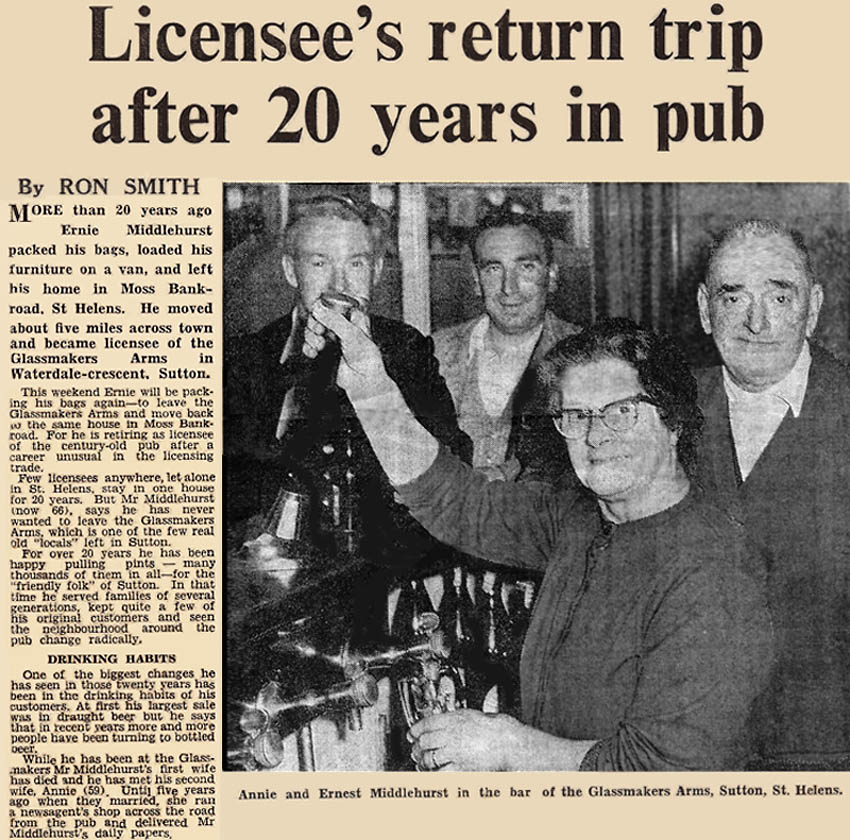
Article published in the Evening Post and Chronicle in 1965 - Contributed by Ken Whittaker

Article published in the Evening Post and Chronicle in 1965

Evening Post and Chronicle 1965
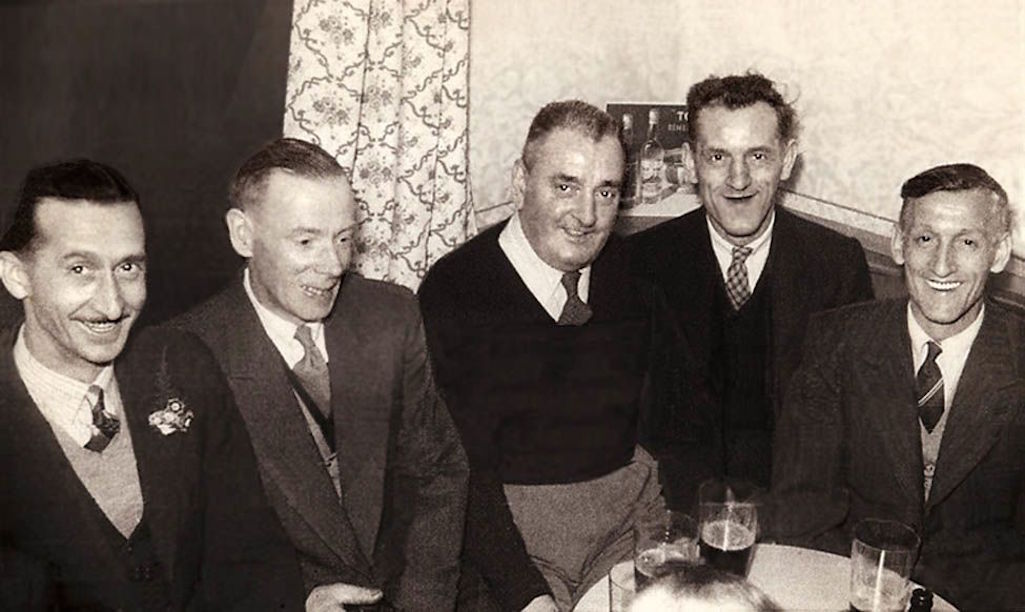
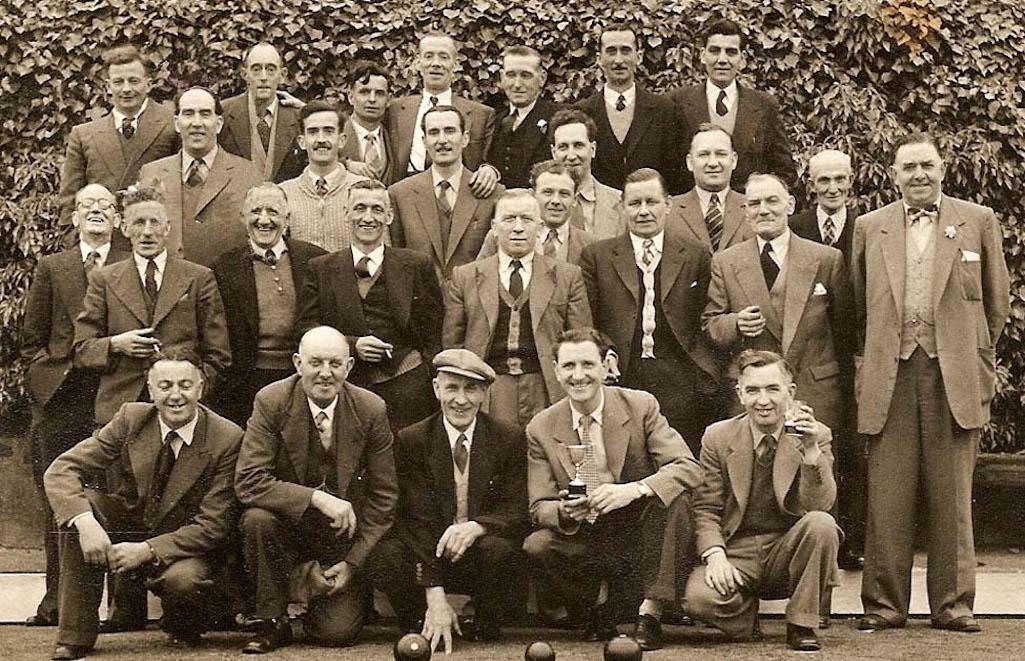
Glassmaker's Arms bowling outing from the late 1950s - Contributed by David Normington Gerrard

A Glassmaker's Arms bowling outing from the late 1950s

Glassmaker's Arms bowling outing
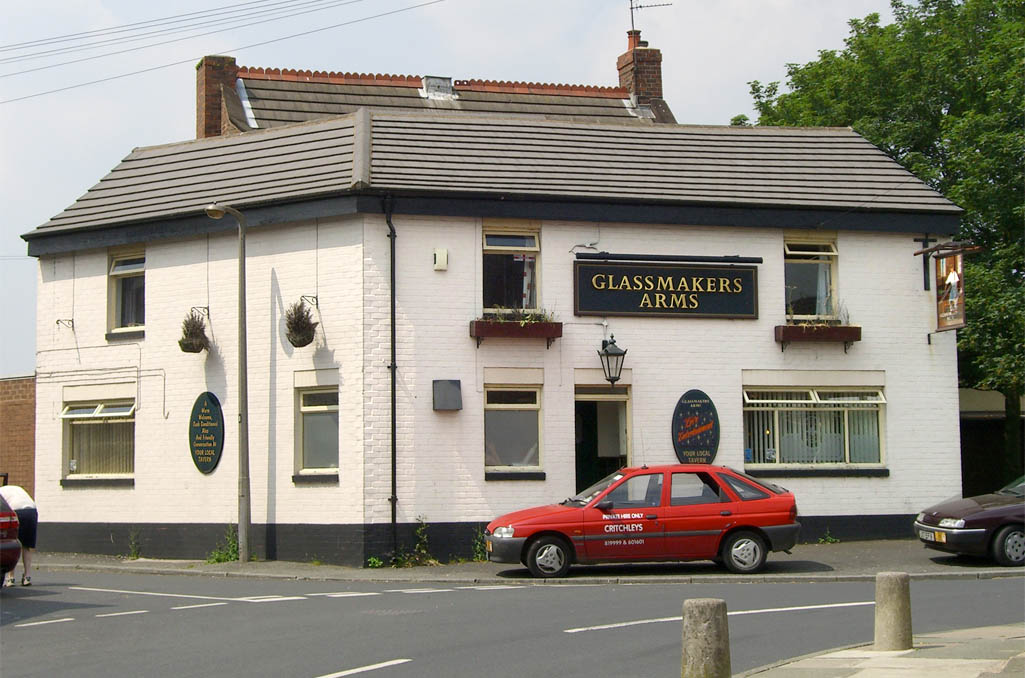
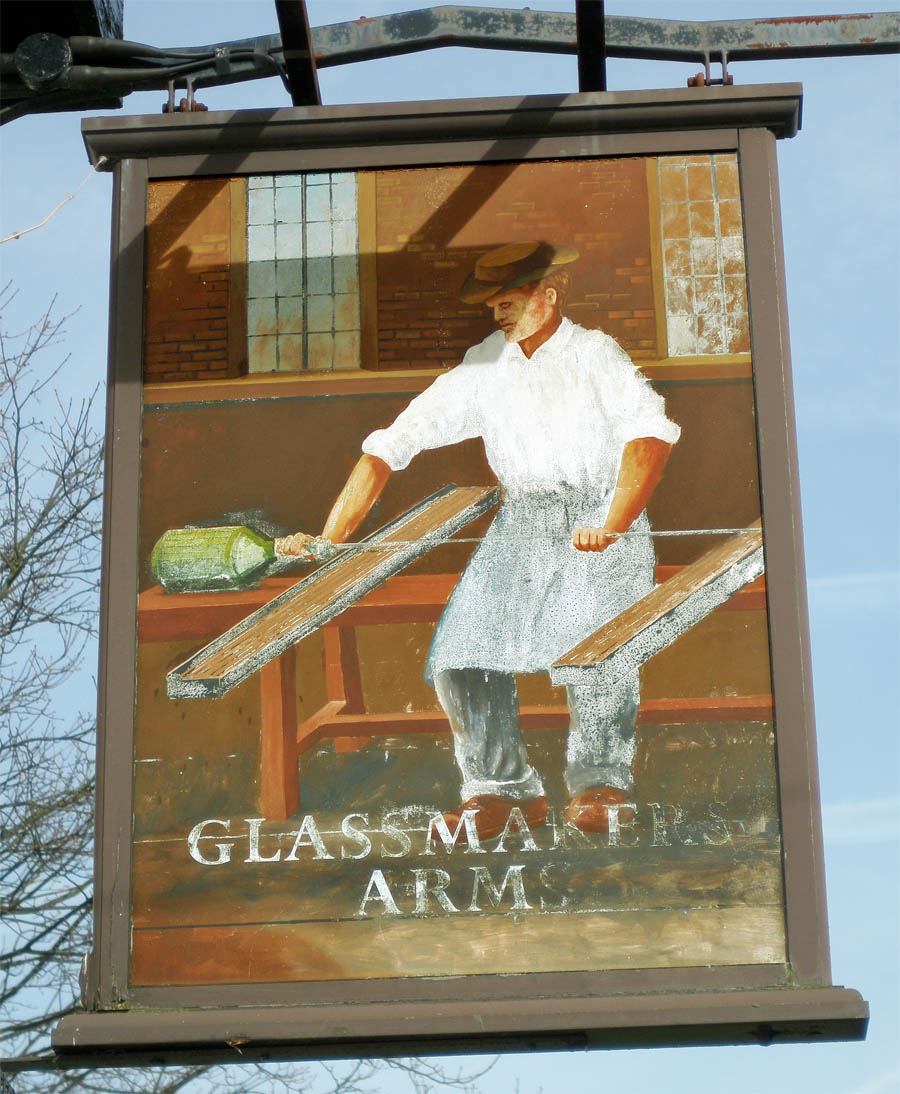
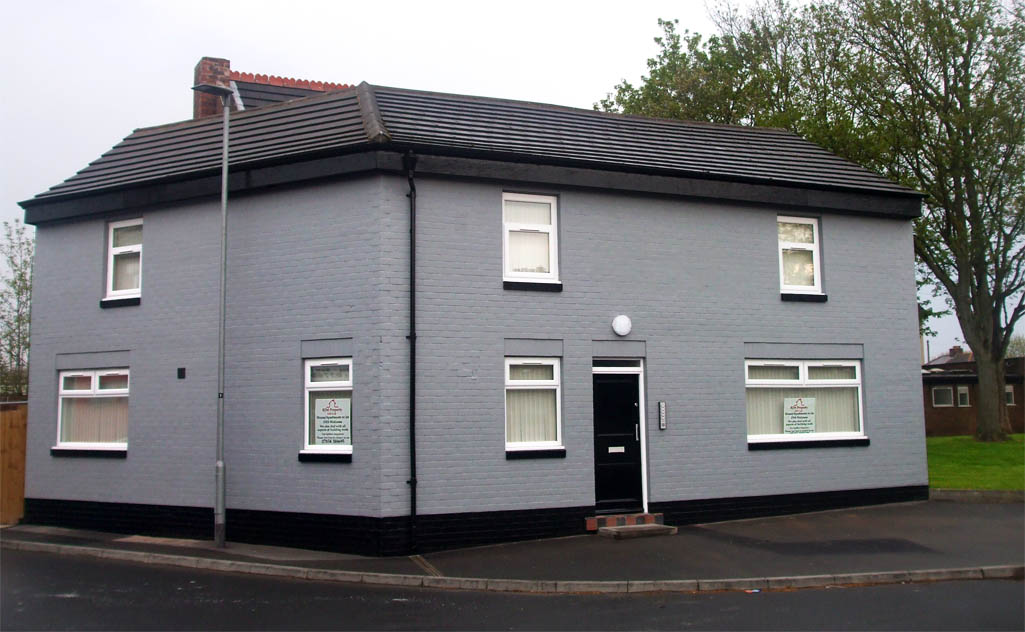
How the Glassmakers Arms looks now - photographed in April 2017 and used for HMO multiple occupancy housing

How the Glassmakers Arms looks now - photographed in April 2017

How the Glassmakers looks now
- On June 20th 1918 Jane Roughley applied for a licence to run the Golden Cross in place of her brother who was joining the army. Her solicitor explained to the magistrates that the liquor licence would be in Mrs Roughley’s name because her husband worked for the railway and they wouldn’t allow their employees to hold a licence. This circumventing of the rules infuriated the St Helens Chief Constable. Arthur Ellerington told the licensing magistrates that he could not be party to such a practice and the application was refused. - Ann Foster (formerly licensee of the Crown Inn in Peasley Cross until it closed in January 1917) obtained the licence on June 21st 1918 from George Almond and was still there in the early 1930s with Louise Holland mine host in 1935. - later Louise Hunter. Another landlord was William Coakley. - It's said that St Anne's football team, with a priest as their trainer, sometimes changed at the Golden Cross. - The last licensee was Mick Caulfield, although another source claims it was Joe Holland. Mr. Caulfield had a couple of geese that roamed around the front of the pub and chased anyone who came close. In an article in the St.Helens Star on July 7th 1983 Alan Whalley wrote: “Quite a number of people have contacted me in praise of Mick and his comfortable old sing-song family pub, which bit the dust as the Pudding Bag fell into dereliction. Mick was down to a ‘peak’ of 10 customers on his busiest night when the decision was taken to put up the shutters for the last time.” - The Golden Cross closed in the mid-sixties and was demolished in the early '70s. -
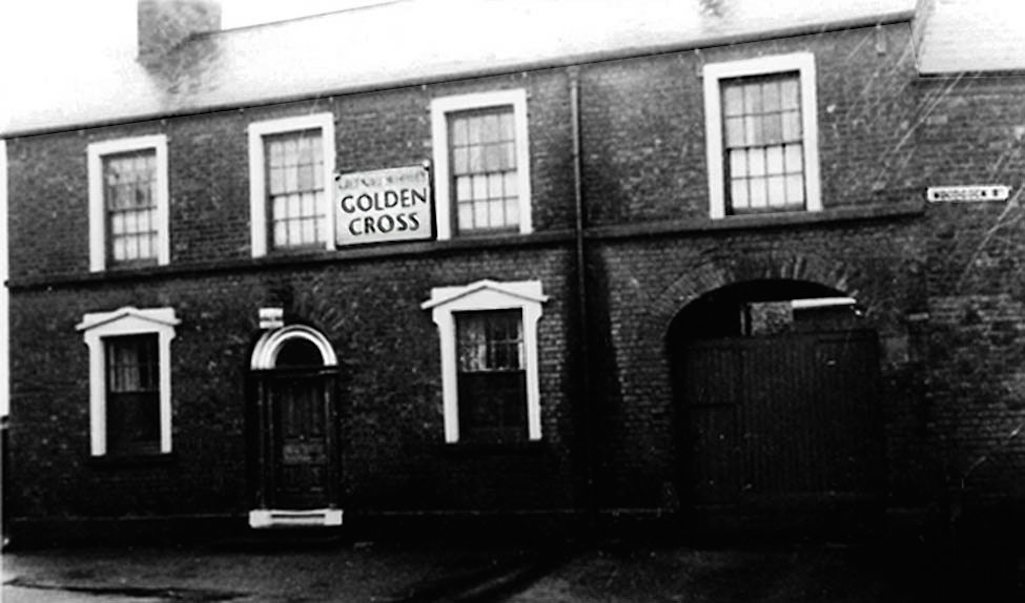
The Golden Cross pub in Woodcock Street, formerly Church Street, 'Pudding Bag', Sutton

The Golden Cross pub in Woodcock Street in ’Pudding Bag', Sutton

Golden Cross in Woodcock Street
Ken Highcock in Whalley’s World in the St Helens Star described the early 1950s when his mother worked at the Green Dragon. He said the sawdust on the floor in the bar area was swept clean every day and spittoons were emptied and polished ready for the opening-time rush from the miners at Sutton Manor Colliery. Joseph Maddison was licensee at this time. - Bill Fisher used to play the organ at the pub - The Green Dragon had an amateur Rugby League team, which in 1975 were admitted to the North West Counties Division 3. - In 1983 landlady Sandra Dickenson organised many events and collections which raised £1000 for a fund for 13-years-old bone cancer sufferer Joanne Birch. - The pub closed in about 2014 and caught fire on three occasions in May 2016. It was advertised for sale at £180,000 but seemingly there were no takers. - A cannabis farm was discovered inside in December 2017 and a blaze in April 2019 left the Green Dragon a burnt-out shell with the roof totally destroyed. In June approval was granted to demolish the building.
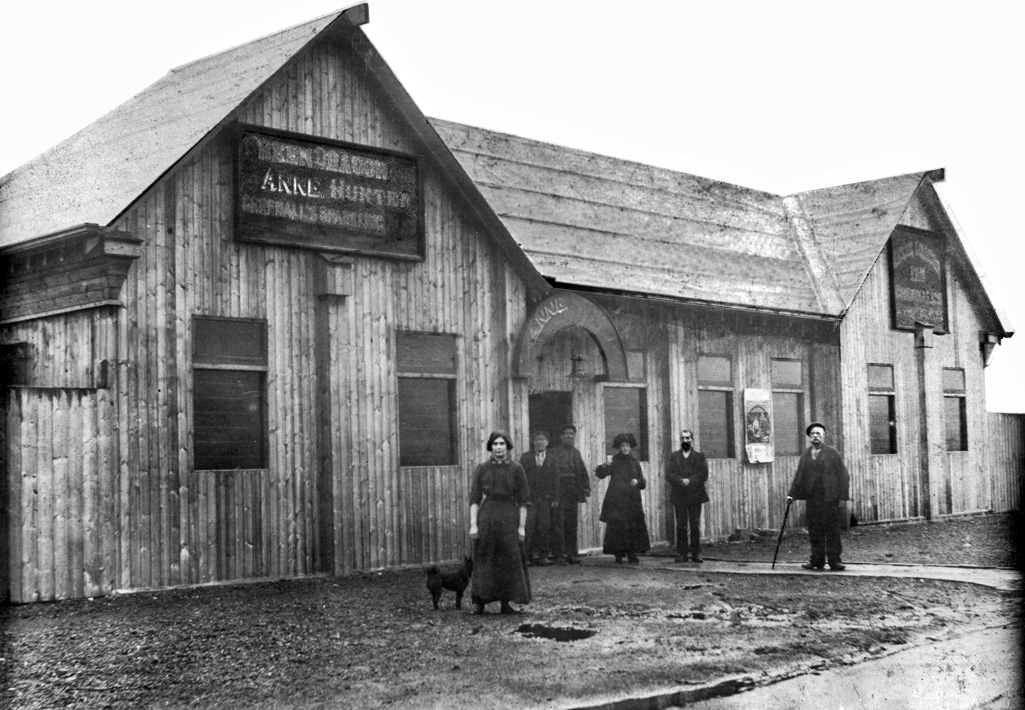
The original and temporary Green Dragon in Gartons Lane, Sutton Manor with landlady Anne Hunter and dog!

The original Green Dragon in Gartons Lane with landlady Anne Hunter

The first Green Dragon and Anne Hunter
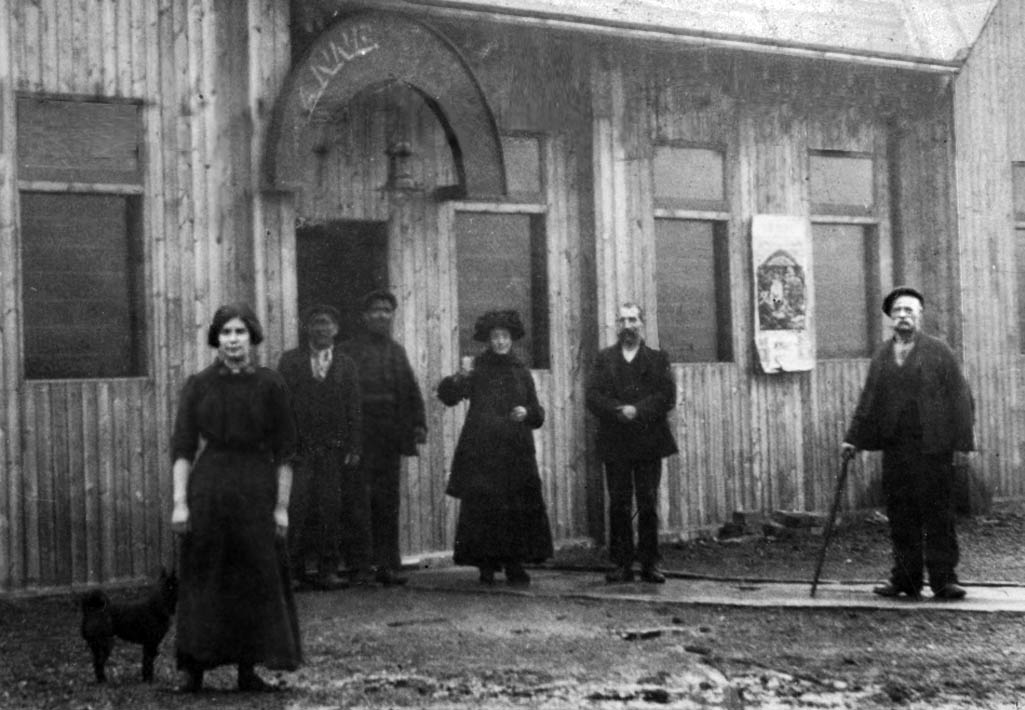
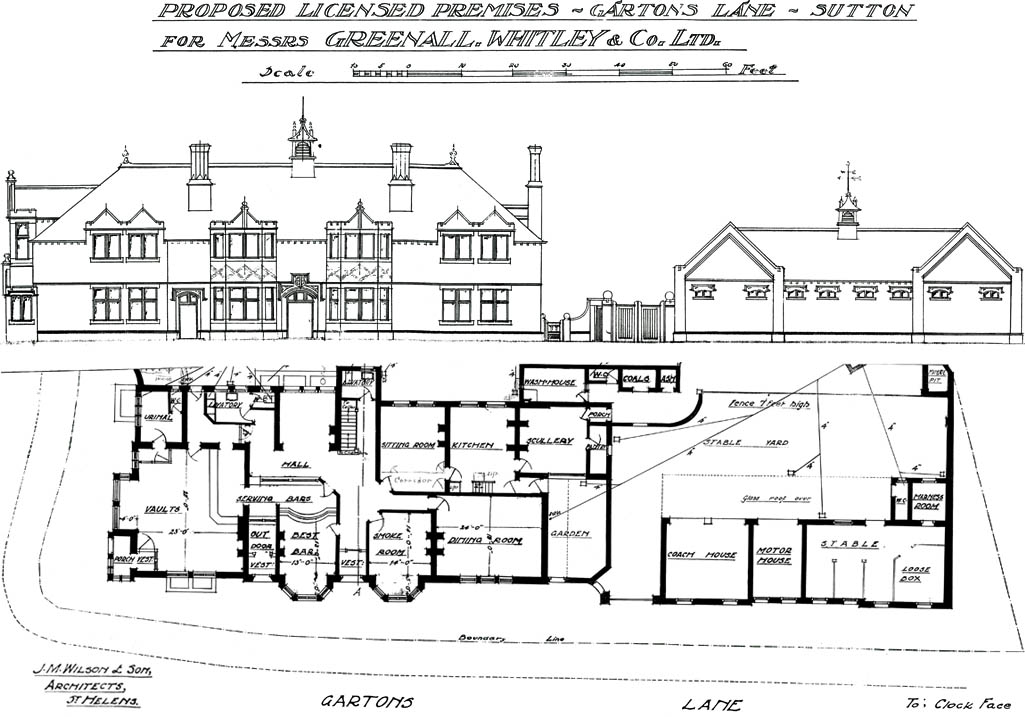
Plans for the Green Dragon in Gartons Lane, Sutton Manor drawn up in 1913 by St Helens’ architects J. M. Wilson and Son

Plans for the Green Dragon in Gartons Lane, Sutton Manor drawn up in 1913

Plans for the Green Dragon in Gartons Lane
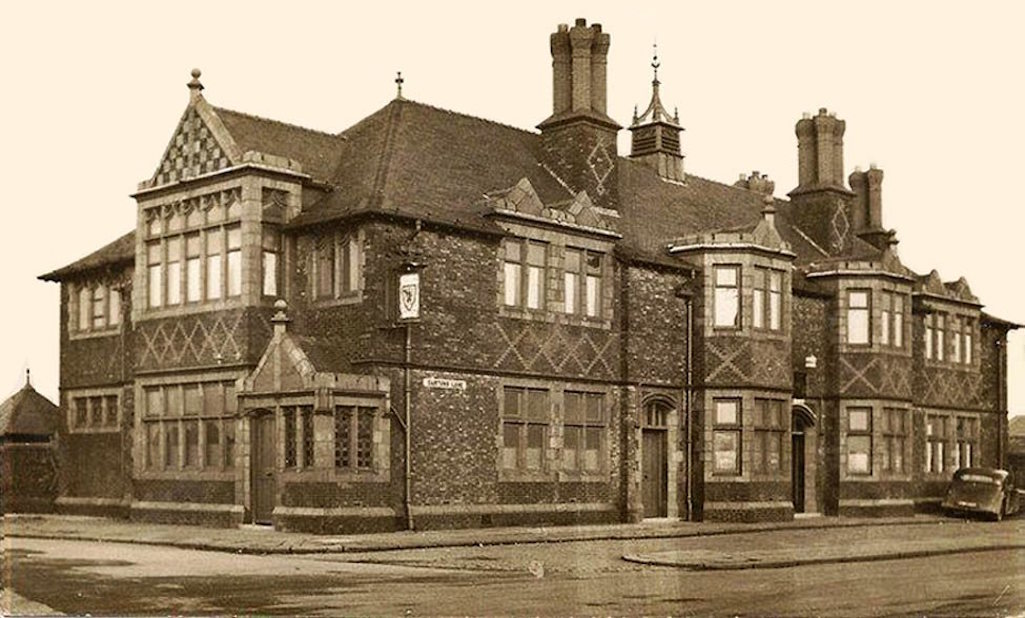
The Green Dragon in Gartons Lane, Sutton Manor taken in the early 1950s

The Green Dragon in Gartons Lane, Sutton Manor in the early 1950s

The Green Dragon in Gartons Lane
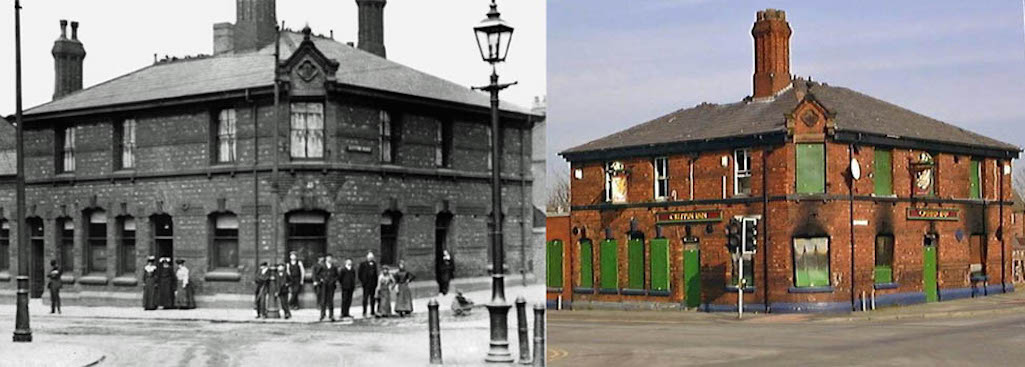
Two views of the Griffin Inn at 145 /147 Peasley Cross Lane on the corner with Sutton Road

The Griffin Inn at 145 /147 Peasley Cross Lane on the corner with Sutton Road

Griffin Inn in Peasley Cross Lane
The license was transferred from Charles Knee to Thomas Hutchinson in April 1874. - On January 24th 1881 Joseph Bibby was fined a total of 15s. for drunkenness and assault after PC Wilson had evicted him from the Griffin. Bibby had kicked the officer's legs from under him and knocked him down three times. - In August 1882 the licence was transferred from James Melling to Thomas Langhorn - On October 3rd 1882, 40-years-old Thomas Williams, who was said to have been "tramping" from Warrington to Liverpool and who was wearing a "hard billycock hat", drank a pint of beer in the Tipping Arms, gave three heavy groans and then dropped dead. This was at 7:20am. - The licensee in the 1891 and 1901 censuses was James Davies. - On February 7th 1903 the forthcoming sale of the Griffin was advertised in the Warrington Guardian. The auction was set to take place on the 18th at the Lion Hotel in Warrington. The tenant was stated as Greenall, Whitley and the total acreage was described as 8 acres, 2 roods, 37 perches. Greenalls subsequently bought the Griffin and a cottage for £3,500. - In March 1919 the licence was transferred from Charles Adamson to Jonathan Shepley, who for many years had been a gamekeeper on the Bold estate. - On July 8th 1919 in the St Helens County Police Court, Edward Appleton was fined for stealing a black Pomeranian dog belonging to Jonathan Shepley. Appleton from Vincent Street was a member of a charabanc party that had been on an outing in the country. Upon their return journey, the party stopped at the Griffin for refreshments. As they left Appleton was seen to pick up Shepley’s Pomeranian at the front of the pub and take it with him. - In August 2016 owners Chef and Brewer reopened the pub after an extensive renovation.
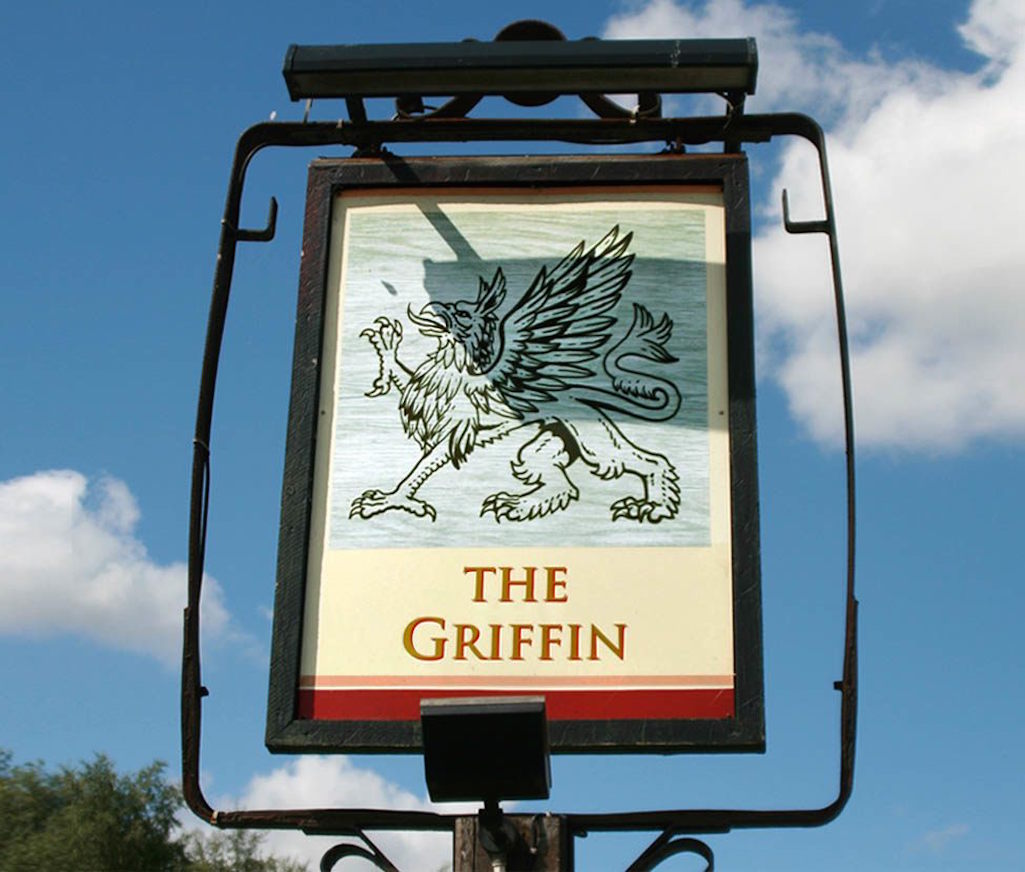
The Griffin Inn in Warrington Road, Bold Heath photographed in 2009

The Griffin Inn in Warrington Road, Bold Heath pictured in 2009

The Griffin Inn in Bold Heath
Hell Bess Inn - See entry above for Ell Bess Inn
Heyes Beerhouse - Warrington Road, Bold - Named after the Heyes family who began running the house c.1857 with William Heyes landlord from 1865 until his death in 1896. For a while his sister’s son-in-law William Jervis was granted temporary authority until Heyes’s 21-year-old nephew James Winstanley applied for the licence in August 1897. The police objected to the application on the grounds that the ‘virtual landlady’ was Mrs. Winstanley, who since the death of her brother Wm. Heyes had run the house badly with cases of drunkenness and loose women. Consequently the magistrates refused the application. At this time Heyes’s was the only beerhouse in Bold, with three inns.
Imperial Hotel / Inn - Sutton Road - Opened in 1869 as an hotel under licensee James Bullen, although it had been a beerhouse for 10 or 11 months beforehand. Mr. Bullen was a joiner and builder by trade but gave up it to concentrate on running a hotel. - The Imperial was listed in Worrall's Directory of 1871 - On September 27th 1873 the Warrington Guardian published this classified sale advert: “The IMPERIAL HOTEL, a licensed public-house at Sutton, near St. Helens, situate on the highway leading from Sutton to St. Helens, with the licence and appurtenances thereto belonging, now occupied by Mr. Jones, as tenant. The tenure of the property is freehold, and comprises 242⅔ superficial square yards or thereabouts, subject to certain reservations, conditions, and covenants contained in an indenture dated 25th March, 1868. The house is newly built, and is a very convenient inn, having roomy vaults, tap-room, and smoke-room, with good kitchen and back kitchen on the ground floor; upstairs 4 capital bedrooms; and has convenient cellaring and suitable yard accommodation; it is situate is an improving part of the thriving township of Sutton, and in a commanding thoroughfare, and is now doing a prosperous trade.”
Richard Jones licensee in 1881 - David Jones listed as licensee in the 1891 & 1901 censuses. - An Oddfellows Friendly Society was organised at the Imperial until its closure in July 1908. - It was described as a beerhouse in the 1911 census and run by Bertram McConnell, who was an American. - William Leche was licensee in 1939. - Phil Soffe became licensee in 1979, with manager Jerome Bond. - In March 1980, 800 Sutton residents signed a petition to try to stop the Imperial’s closure after Phil was refused a new licence. The magistrates ruled that Mr. Soffe was not a fit and proper person to hold the licence because of the manner in which the premises were being run, although they emphasised that there was nothing detrimental about his character. Manageress Linda Bond told the St.Helens Newspaper that: “Our customers are some of the best people you could wish to meet”. One of them was 76-year-old David Duckworth from Morris Street who had patronised the pub for over 50 years and said: “It would be a hell of a loss if this pub closes down. I want to spend my last years in the Imperial.” At the time of closure it was the only free house in St.Helens.
Junction Inn - 102 Junction Lane - Owned by the London and North Western Railway Company - On September 29th 1886, Joseph Neil was committed for trial charged with indecently assaulting Jane Davies, the 13-years-old daughter of the landlord of the Junction Inn. - The licensee in 1901 was coal miner Edward Smith and in 1911 the landlord was William Lawrence. - The McDermott family ran the pub for many years from 1932 - See Memories of Sutton 5 article 'The Rolling Mill Tavern and the Junction Inn' by Alan McDermott - In December 1942 coal mining labourer Joseph Grice, of 110 Peckers Hill Road, was fined 10 shillings for striking licensee Edward McDermott and 20s. for refusing to leave the premises when requested. - Celebrity regulars included boxer Ernie Proudlove and footballer Bert Trautmann. In later years Gary Barlow in pre-Take That days performed twice when Billy Robinson was licensee. Son Phil writes that he tried to book Barlow for a third time but "he declined saying that he was booked on a cruise ship to meet up with some other members of a boy band he was going to be in..." - In 2020 with coronavirus restrictions in place the pub's licensee Jonny Woodward created outdoor seating areas named after great Saints players.
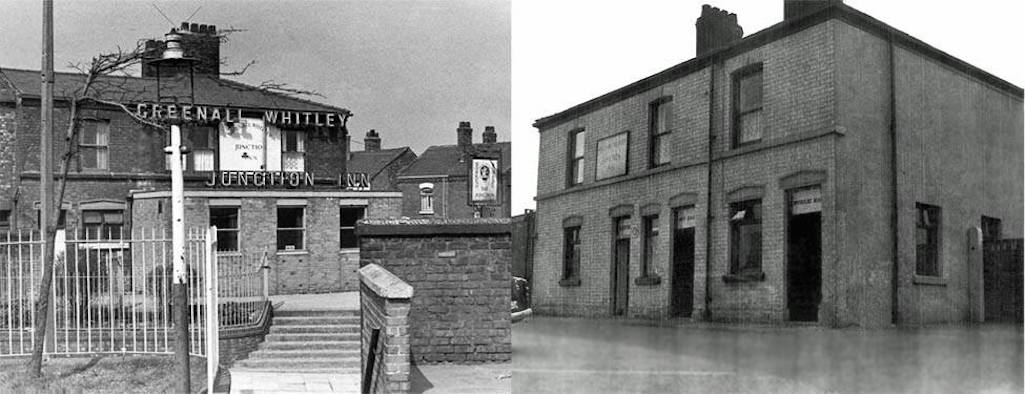
The Junction Inn in Junction Lane, Sutton c.1960, including a view from the station - both contributed by Alan McDermott

The Junction Inn in Junction Lane c.1960, including a view from the station

Junction Inn in Junction Lane c.1960
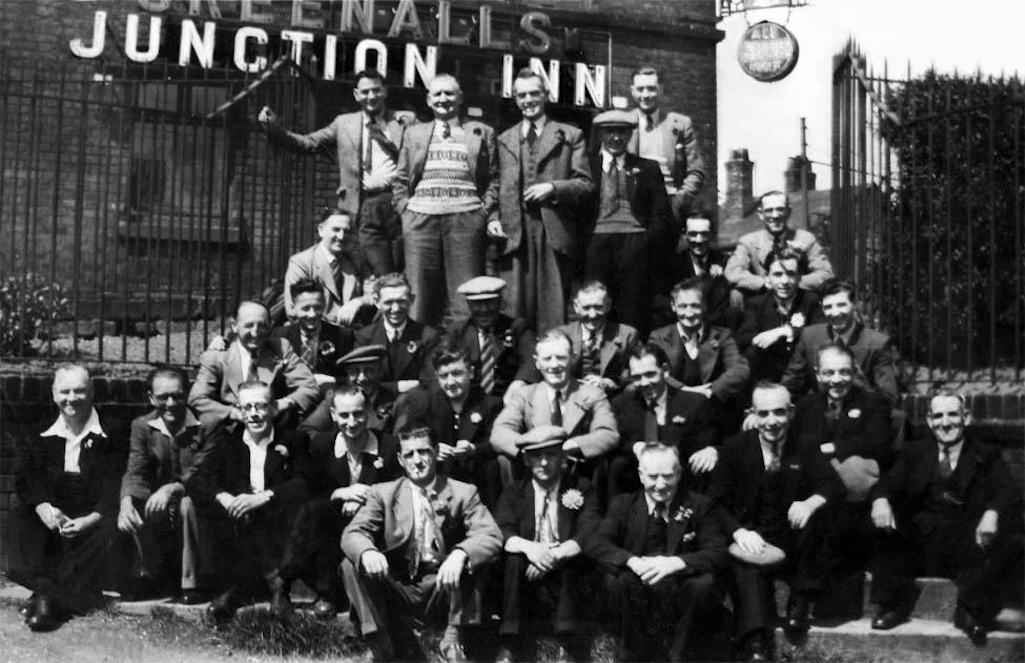
Undated photo - Thomas Fairhust is front row, first left with Alf Tickle on far right - contributed by Julie Bligh

Undated photo - Thomas Fairhust is on the front row, first left

Junction Inn, Sutton group photo
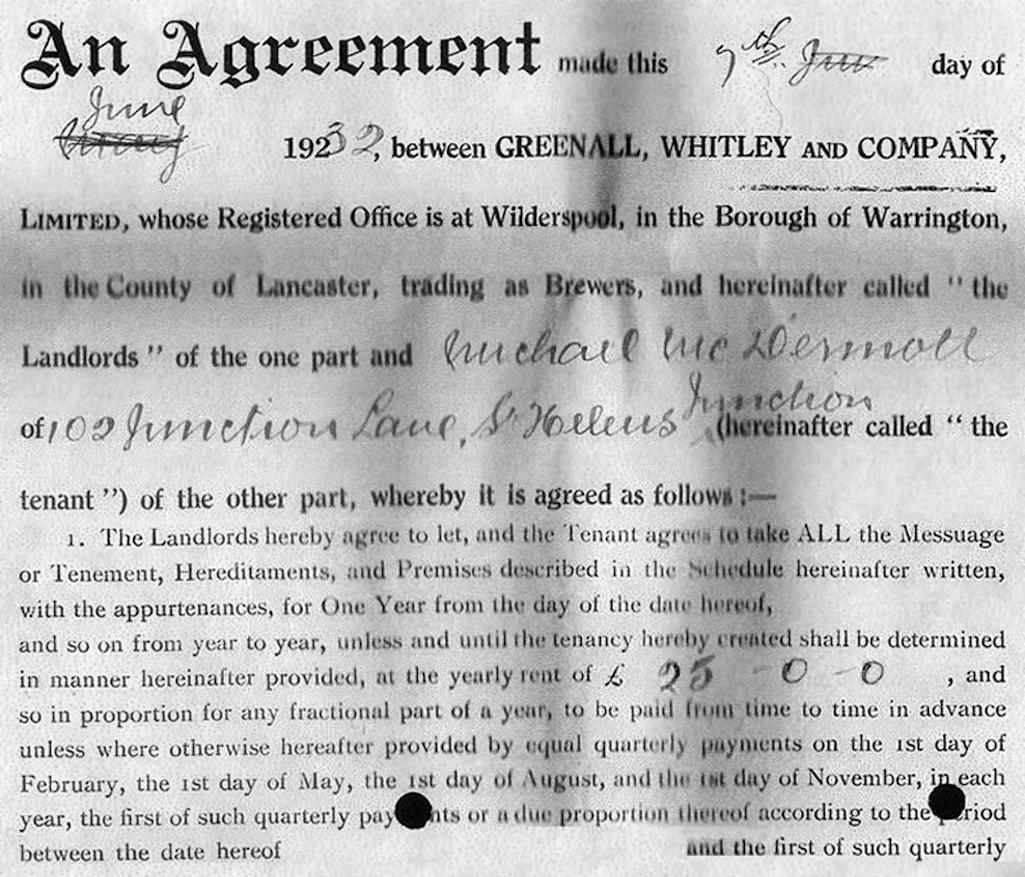
Greenall Whitley's tenancy agreement with landlord Michael McDermott dated June 1932 - contributed by Alan McDermott

Greenall Whitley's tenancy agreement with Michael McDermott from 1932

Greenall Whitley's tenancy agreement with Michael McDermott from 1932
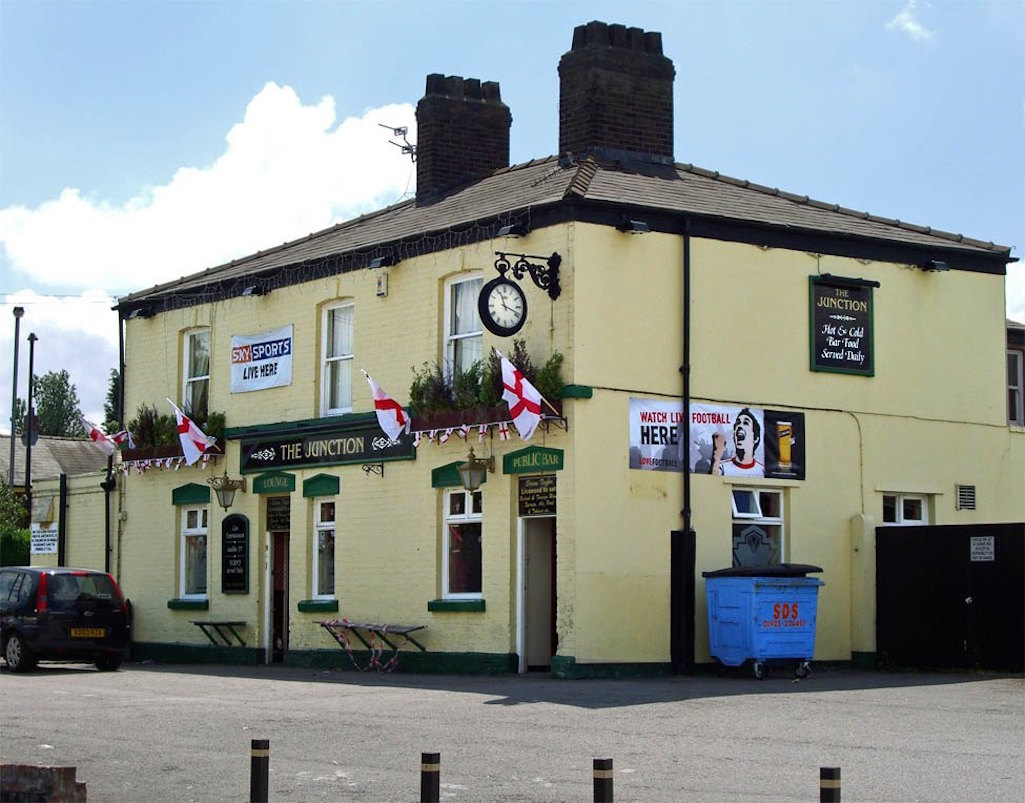
The Junction Inn pictured during the 2006 football World Cup and below in 2015

The Junction Inn pictured during the 2006 football World Cup

The Junction Inn pictured during the 2006 World Cup and below in 2015
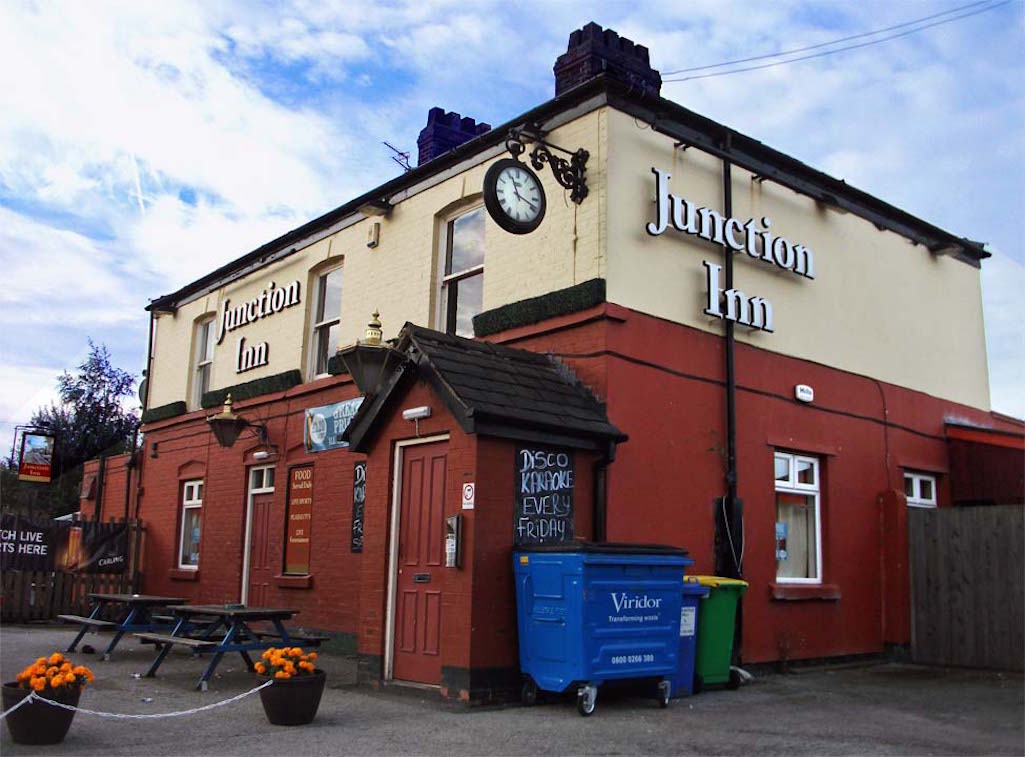
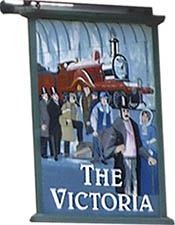
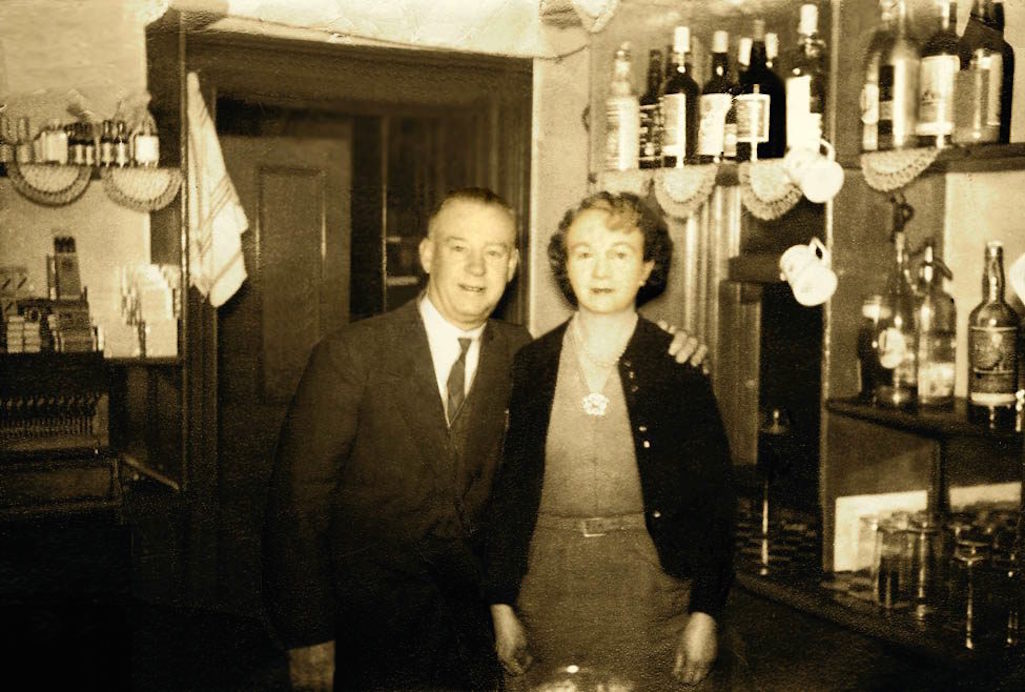
Tom and Emily Fairclough, landlord and landlady of 'The Little Pig' in 1956 - Contributed by Edna Smith

Tom and Emily Fairclough, landlord and landlady of The Little Pig in 1956

Tom and Emily Fairclough, Little Pig landlord and landlady in 1956
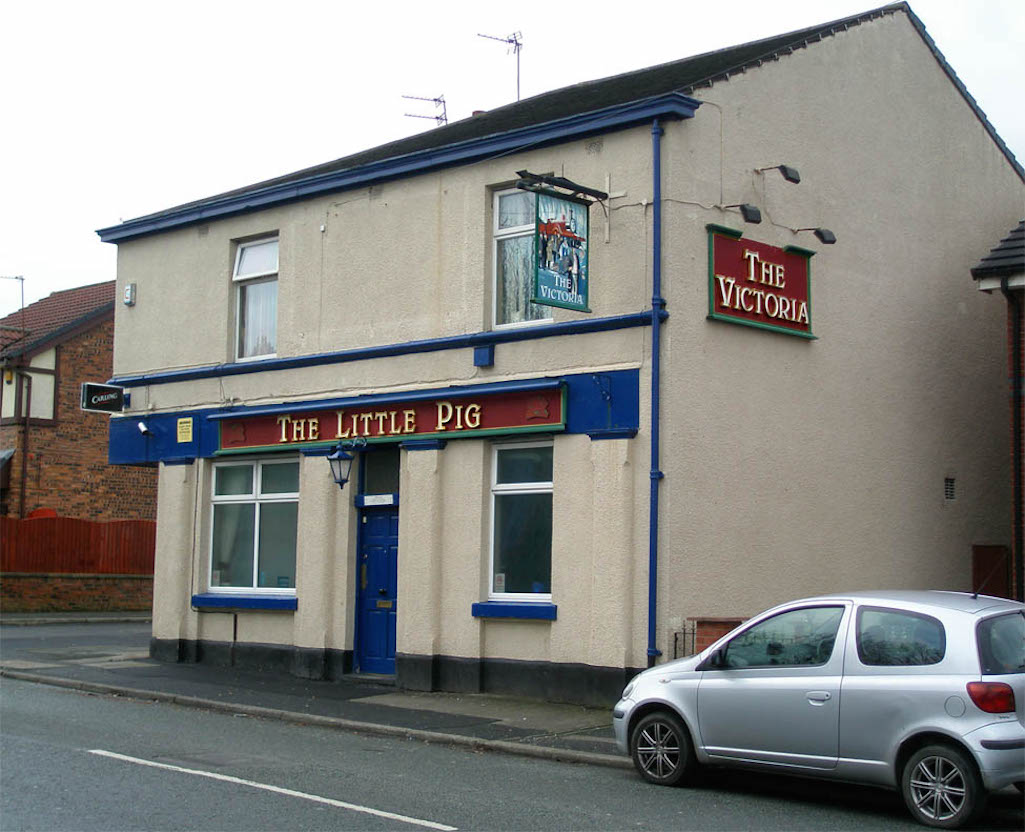
The pub is pictured in 2009 when it bore its twin names 'The Victoria' and 'The Little Pig'

The pub in 2009 when it bore its twin names 'The Victoria' and ‘Little Pig'

The pub is pictured in 2009 bearing its twin names The Victoria and Little Pig
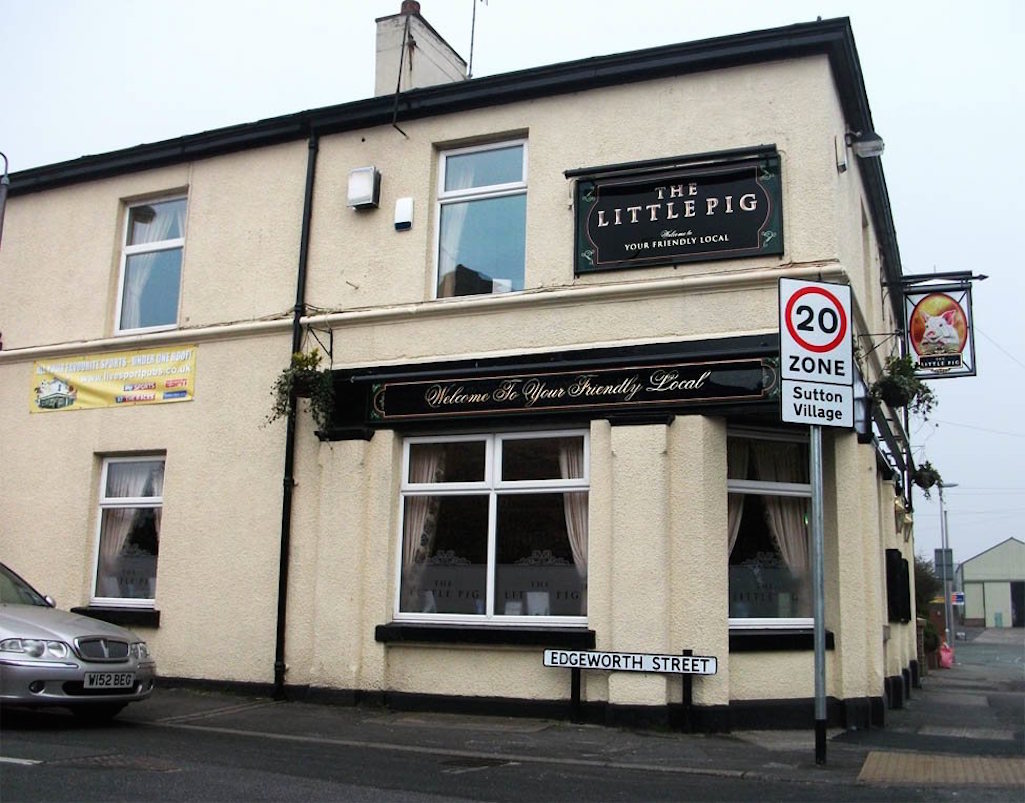
Pictured in April 2013 the pub that used to be near Fletcher's slaughterhouse is now exclusively 'The Little Pig'

Pictured in April 2013 the pub is now exclusively 'The Little Pig'

Pictured in April 2013 the pub is now exclusively called ’The Little Pig'
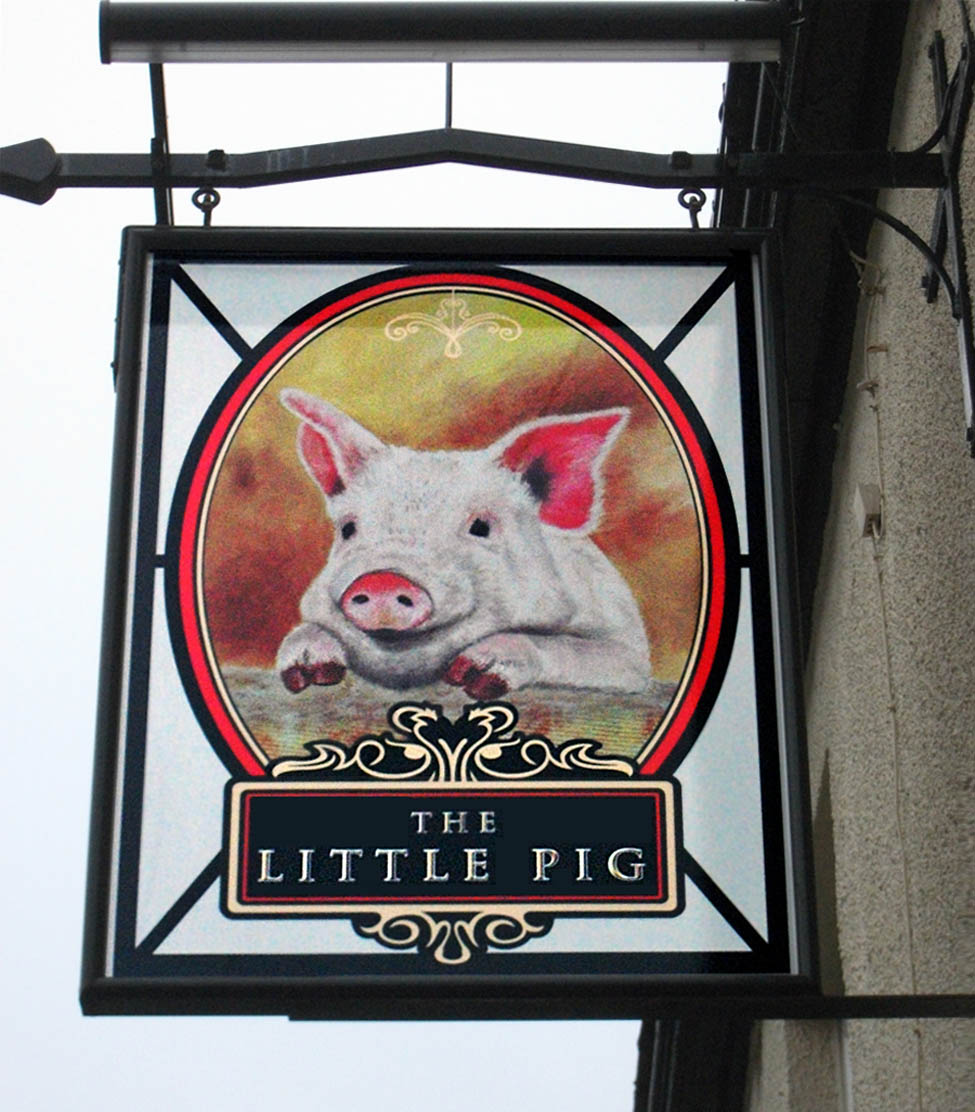
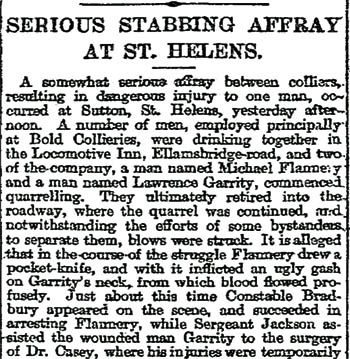
The Catholic Philanthropic Friendly Society was organised by the inn until the scheme's closure in February 1901. - A niece of the Haslams, Anne Mary, was brought up in the Round House and she married brass moulder Charles Heyes. He took over the licence around 1905 and their family of nine was brought up in the pub, although Heyes continued to work at a local foundry. - In September 1904 permission was granted by St.Helens magistrates to turn the snug into part of the vaults - In 1913 Charles Hayes and Jack Yates patented a safety device that was intended to prevent mine cages from plummeting if ropes or chains broke and an improved version was patented in 1921. Heyes became a director of the British Quick Fire Light Company based in Hoghton Road but was made bankrupt in 1924. Charles Heyes left the Locomotive and moved to Croydon to find work - George Almond was licensee in 1939. - About 1949 John Leslie Houghton took over the pub, initially in the name of his wife Ann. He bred and showed Irish Setters and kept dog kennels in the large stables at the rear of the Locomotive. Between 1961 and 1987, John was Chairman and President of St Helens Canine Society and left the pub c.1954. - The pub had its own Old Folk’s Club and on August 5th 1952 it held a novelty dog show in the Locomotive’s club room for the funniest and cleverest dogs. It attracted 37 entries, with the proceeds from the show going to the Old Folk’s Outing fund. - Joseph Burrows from Watery Lane was fined £10 on July 12th 1954 for using the Locomotive as a betting house. In court Burrows said that he had taken bets "on the sly" from his mates. - The Locomotive Inn closed during the mid-1970s.
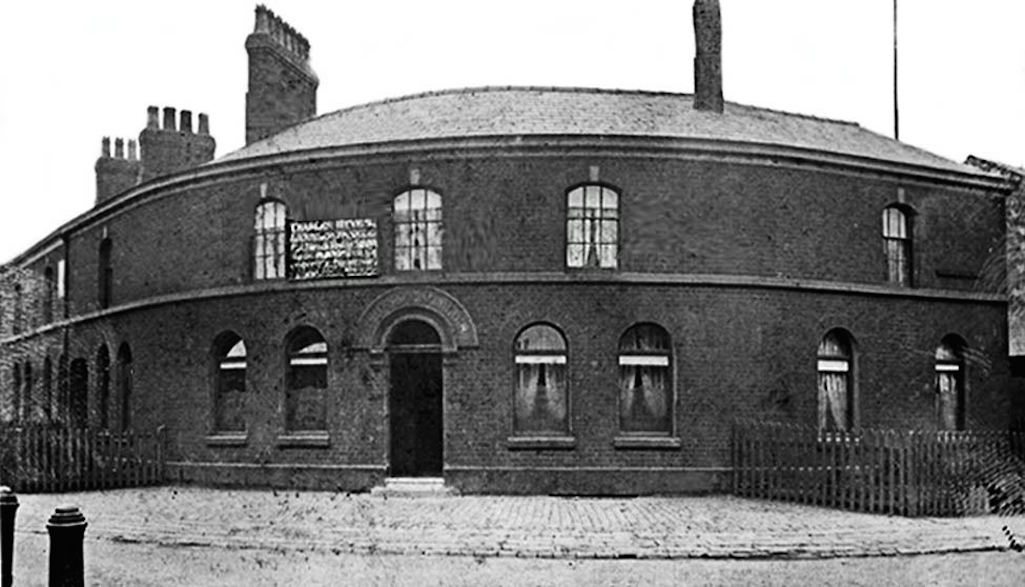
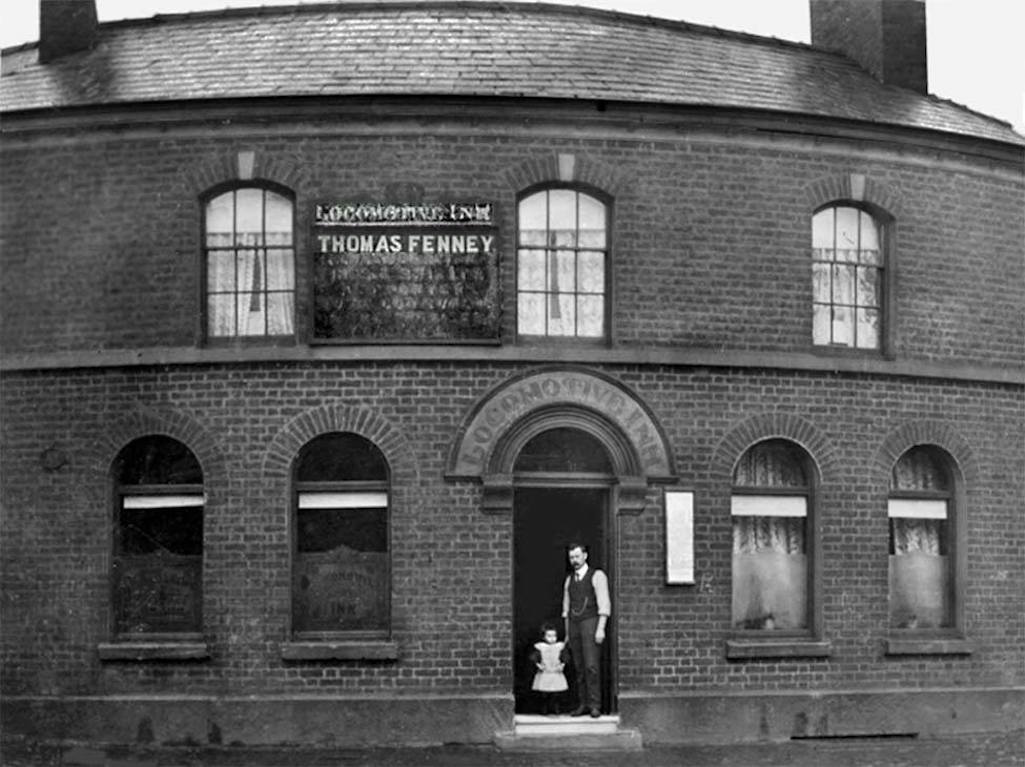
Tommy Fenney with his son James who died in the war in 1918 pictured outside the 'Round House'

Tommy Fenney with his son James who died in the war in 1918

Tommy Fenney with his son James



